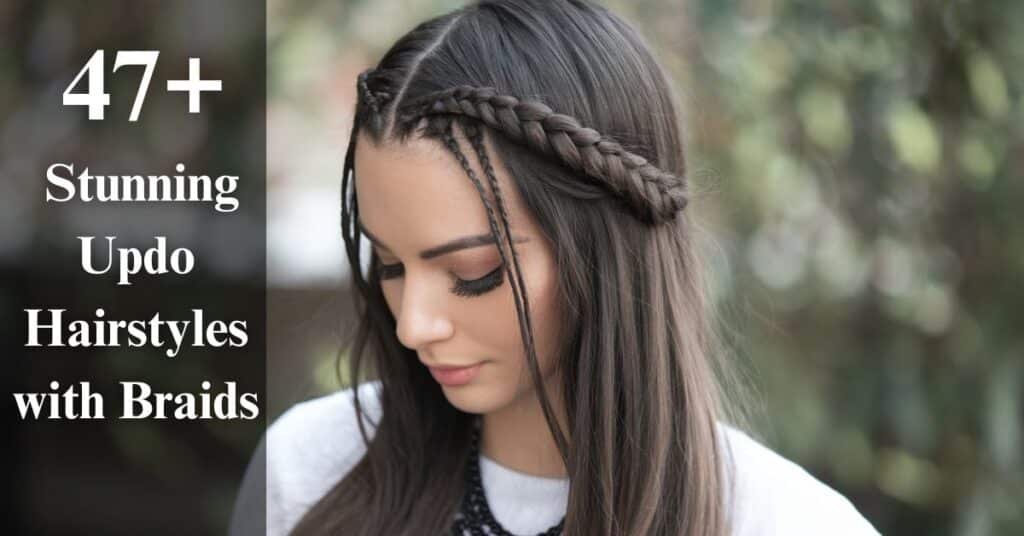Updo Hairstyles with Braids have captured our hearts and transformed our hair game forever. They’re the perfect marriage of sophistication and creativity, offering endless possibilities for those special occasions or just when you wanna feel extra fabulous on a random Tuesday.
I’ve spent years experimenting with different braiding techniques, and I’m thrilled to share these 47+ stunning updo hairstyles that incorporate braids in uniquely beautiful ways.
Whether you’ve got a wedding to attend, a graduation ceremony, or just feel like treating yourself to a gorgeous new look, there’s something here for everyone. These styles work across different hair textures, lengths, and types with a few adjustments here and there to suit your specific needs.
1. The Classic Braided Crown
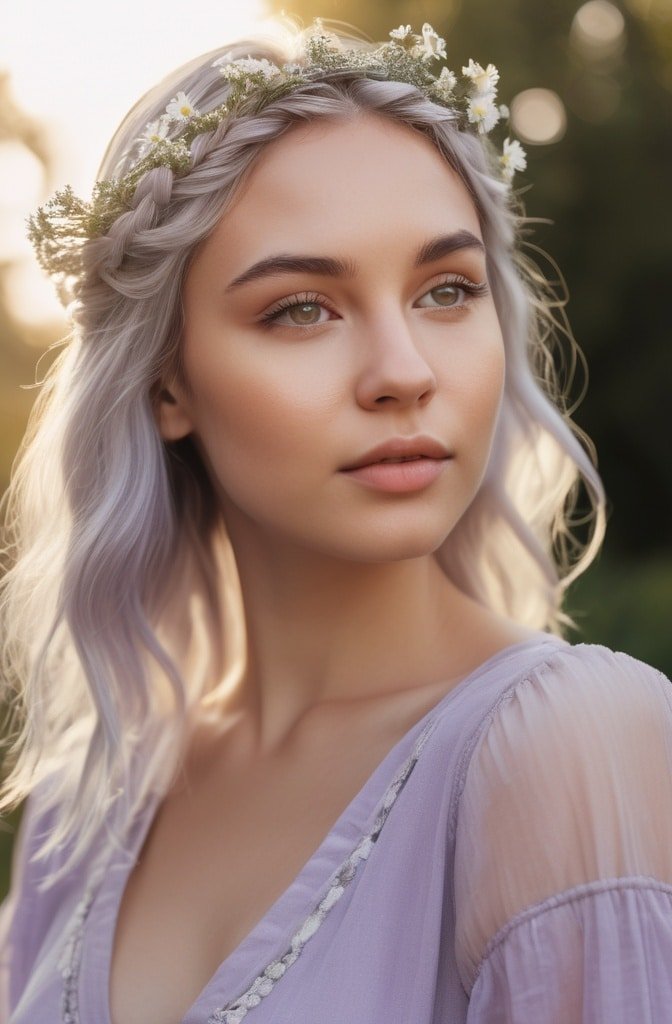
The braided crown never goes out of style, and for good reason. It’s elegant, timeless, and surprisingly versatile. Start by creating two Dutch braids on either side of your head, then wrap them around to meet at the back, pinning securely as you go.
What makes this style truly special is how it frames your face, creating a soft yet regal appearance that works for formal events or casual gatherings alike. Add some delicate flowers or pearl pins for special occasions, or keep it simple for everyday elegance.
Pro tip: If your hair’s on the thinner side, try gently tugging at the edges of your braids before wrapping them around. This creates the illusion of fullness and gives your crown a more substantial look.
2. Twisted Rope Braid Bun
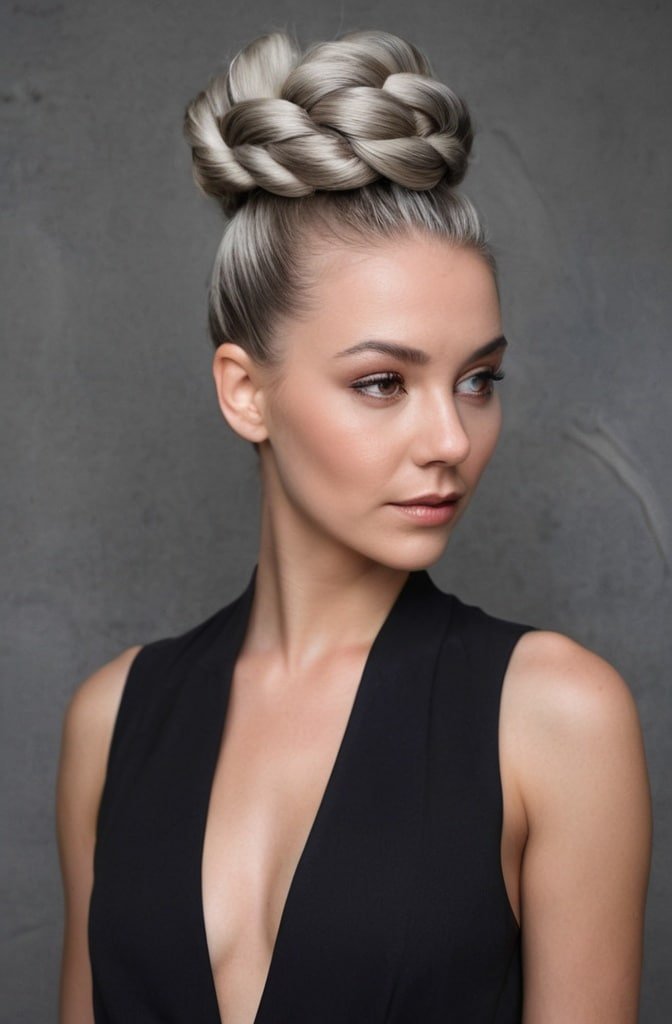
This gorgeous style combines the texure of rope braids with the classic elegance of a bun. Begin by dividing your hair into two sections and creating a rope braid by twisting two strands around each other. Wrap the completed braid around itself to form a bun at the nape of your neck.
The result is sophisticated yet surprisingly simple to achieve with a bit of practice. What I love most about this style is how it holds up throughout the day—no need for constant touch-ups or worry about fly-aways.
For extra security, use U-shaped pins rather than straight bobby pins. They grip more hair and keep everything locked in place, even through dancing or windy conditions.
3. Fishtail Braided Updo

The fishtail braid has a distinctive, intricate appearance that instantly elevates any updo. Create a side fishtail braid, then wrap and pin it into a low, asymmetrical bun for a modern take on formal styling.
This style works particularly well for those with highlighted or balayage hair, as the complex weaving pattern of the fishtail showcases different color dimensions beautifully. It’s also perfect for second-day hair, as a bit of texture actually helps the braid hold better.
Dont forget to pancake (gently pull out) the edges of your fishtail for a fuller, more relaxed effect. This simple technique transforms a basic fishtail into something truly spectacular.
4. Braided Faux Hawk Updo
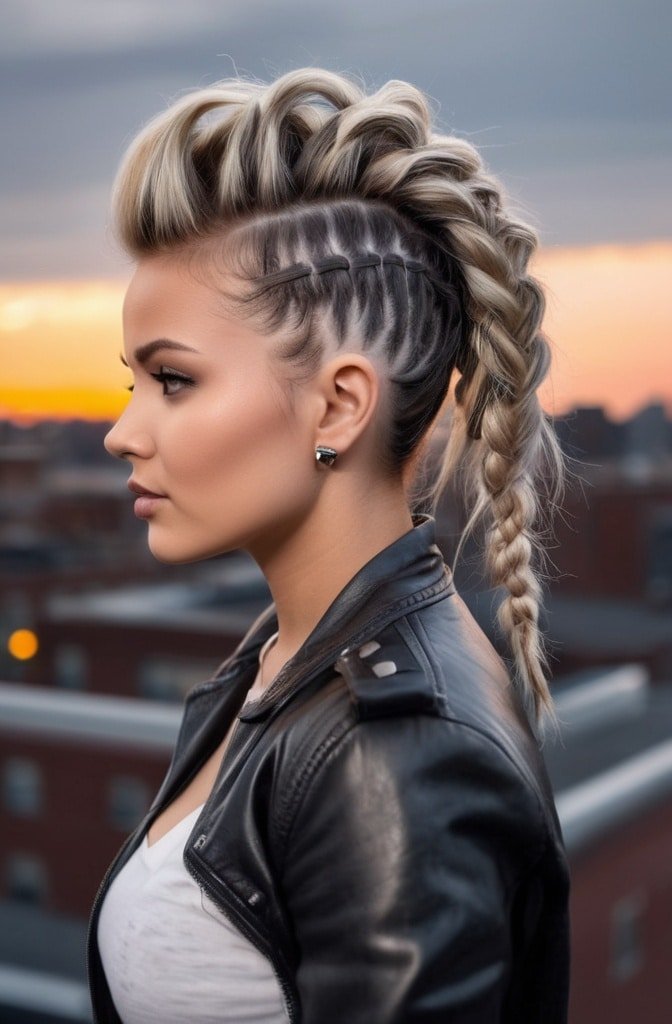
For those bold souls looking to make a statement, the braided faux hawk updo delivers major impact. Create three or four Dutch braids running from your forehead to the crown, then style the remaining hair into a voluminous, texturized bun at the back.
This edgy-meets-elegant style works amazingly for formal events where you want to stand out from the crowd. The contrast between the sleek braided section and the deliberately messy bun creates a perfect balance of structure and chaos.
The best thing about this style? It actually looks better if its not too perfect, so don’t stress about achieving absolute symmetry with your braids.
5. Bohemian Halo Braid with Loose Tendrils

Channel your inner forest nymph with this whimsical, romantic style. Create a Dutch braid that circles your entire head, then gently pull out a few face-framing tendrils and pieces around your crown for a soft, lived-in appearance.
This ethereal look pairs beautifully with floral dresses or boho-inspired outfits, and it’s particularly stunning for outdoor events or summer weddings. The relaxed nature of this style makes it feel effortless yet intentional.
For extra bohemian flair, try weaving a delicate ribbon or thin piece of lace through your braid. This unexpected touch adds color and dimension without overwhelming the natural beauty of the hairstyle.
6. Braided Top Knot
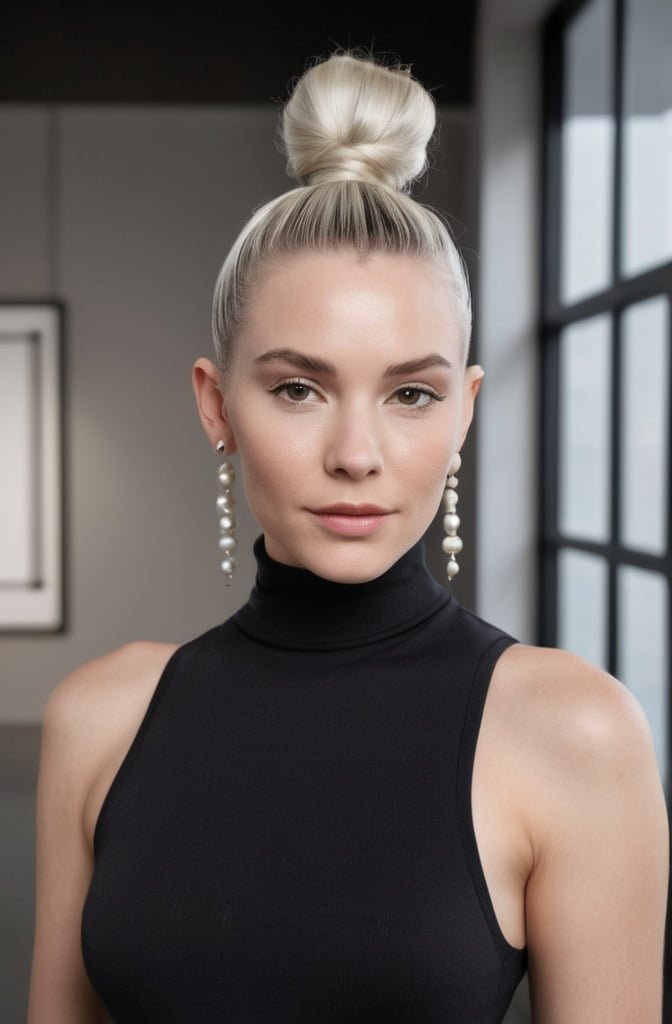
The top knot gets a sophisticated upgrade with the addition of braids. Start by creating a high ponytail, then braid it completely before wrapping and pinning into a knot on top of your head.
What sets this apart from a regular top knot is the amazing texture the braid creates. Instead of a smooth bun, you get a knotted, almost woven appearance that looks complex but takes barely any additional effort.
This style works wonderfully for those busy mornings when you need to look polished but don’t have tons of time. It transitions seamlessly from workday to evening plans without missing a beat.
7. Multi-Textured Side Updo
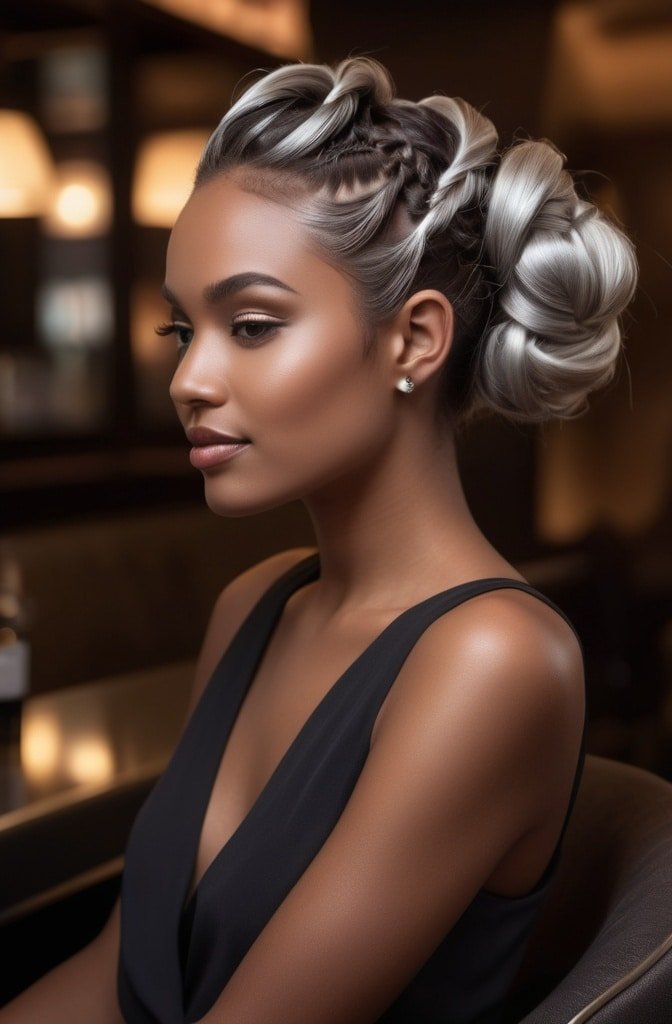
This showstopper combines several braiding techniques into one asymmetrical masterpiece. Incorporate a French braid, fishtail, and traditional three-strand braid, all gathered into a textured side bun.
The varying widths and patterns create visual interest that photographs beautifully from every angle. This style is perfect for brides or special occasions when you want something truly unique.
It might look complicated, but the beauty of this updo is that each element is relatively simple—it’s the combination that creates the wow factor. Plus, if one section isn’t perfect, the overall effect still remains gorgeous.
8. Low Braided Chignon
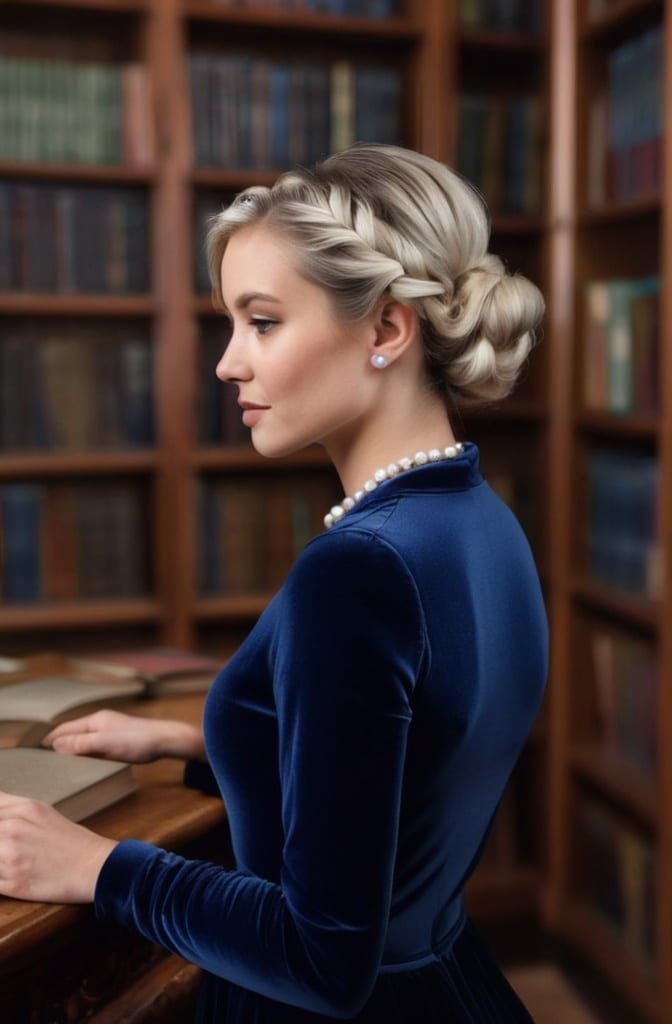
The low braided chignon exudes sophistication with its understated elegance. Begin with a side part, then create a loose French braid that wraps around to form a low chignon at the nape of your neck.
This timeless style works beautifully for formal office settings, upscale dinners, or whenever you need to project confidence and polish. The low positioning makes it comfortable to wear all day, even if you’re prone to updo headaches.
For a modern twist, try incorporating a small section of contrasting braid type perhaps a thin fishtail or rope braid—within the larger French braid structure.
9. Double Dutch Braided Updo

Double the braids, double the impact! This style features two Dutch braids running parallel before joining together in a bun or twisted knot at the back.
The inverted nature of Dutch braids (where the braided section sits on top rather than tucked in) creates a raised, three-dimensional effect that makes this updo particularly striking. It’s perfect for active events when you need your hair completely secure.
Pro tip: If your having trouble keeping your Dutch braids tight at the back of your head, try braiding with your head tilted forward. This position gives you better visibility and control over the tension.
10. Milkmaid Braids with a Twist
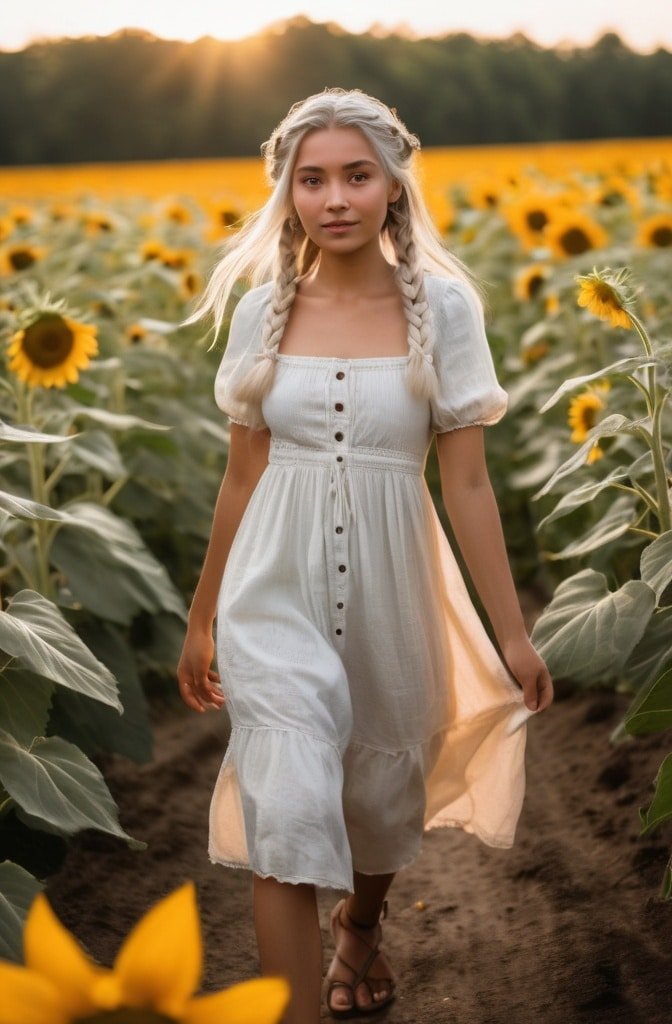
This sweet, Heidi-inspired style gets a modern update with asymmetrical positioning and intentionally imperfect texturing. Create two braids, then wrap them around your head slightly off-center for a contemporary take on this classic look.
The beauty of milkmaid braids lies in their versatility—they work equally well for casual brunches or formal events, depending on how you accessorize them. Add a velvet headband for winter elegance or tiny fresh flowers for spring celebrations.
This style is especially forgiving for those with layers, as shorter pieces can be incorporated into the braids or left out as face-framing wisps for a soft, romantic effect.
11. Braided Ballerina Bun
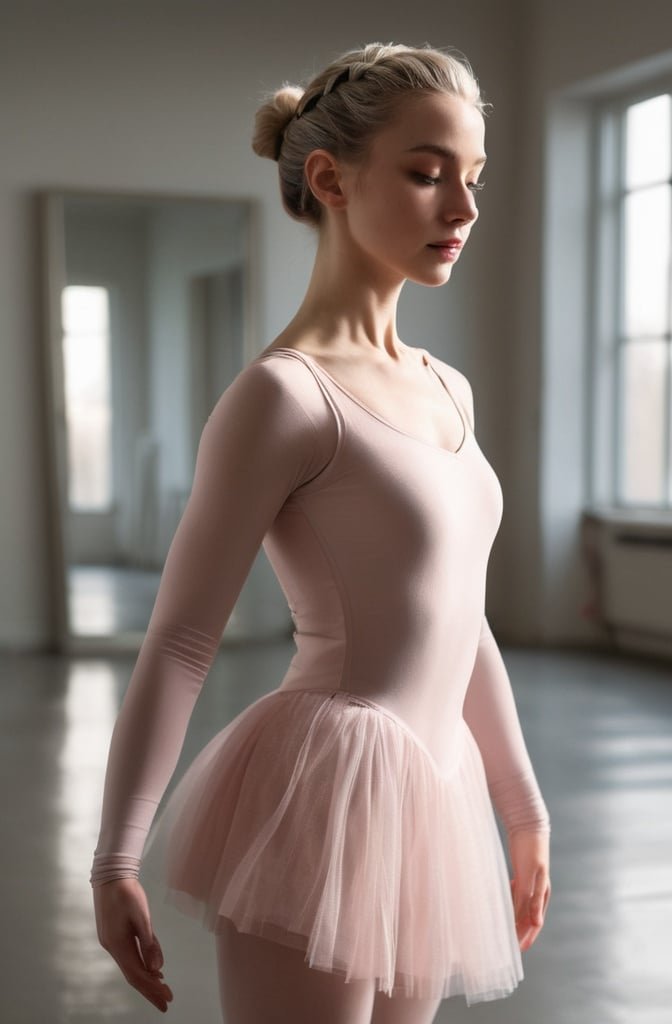
The classic ballerina bun gets reimagined with the addition of a braid wrapped around its base. The contrast between the smooth, sleek bun and the textured braid creates visual interest while maintaining the clean lines ballerina buns are known for.
This elegant style works beautifully for dance performances (obviously), but also for minimal-chic brides, professional events, or anytime you want to channel your inner grace and poise.
The height of your bun drastically changes the effect—a high placement creates a more dramatic, fashion-forward look, while a mid-height bun feels more classic and timeless.
12. Infinity Braid Updo

The infinity braid creates a continuous, figure-eight pattern that looks incredibley intricate but is actually quite accessible once you master the basic technique. Style it into an updo by wrapping and pinning the completed braid into a circular shape at the back of your head.
This mathematical, pattern-focused style stands out for its unique structure and eye-catching symmetry. It works particularly well on solid-colored hair where the pattern can really shine.
If you’re new to infinity braiding, try practicing on a three-strand ribbon before attempting it on your own hair. The visual cues from different colored ribbons help build muscle memory for the weaving pattern.
13. Hidden Braid Tuck
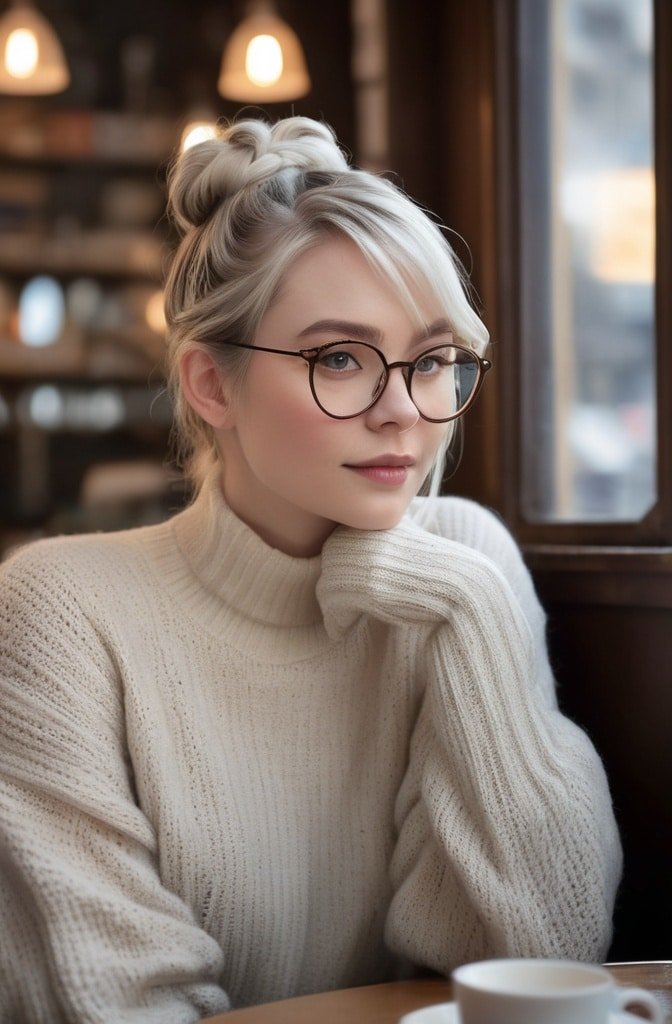
For those who prefer subtle braided elements, the hidden braid tuck offers the perfect solution. Create a few thin braids throughout your hair, then incorporate them into a seemingly simple updo, allowing just hints of the braided texture to peek through.
The secret complexity of this style makes it intriguinly sophisticated. Most observers won’t immediately recognize the braided elements, instead just noting that your updo has particularly interesting texture.
This approach works wonderfully for professional settings where you want to express personality while maintaining appropriate formality. It’s my go-to for job interviews or important presentations.
14. Braided Pompadour Updo
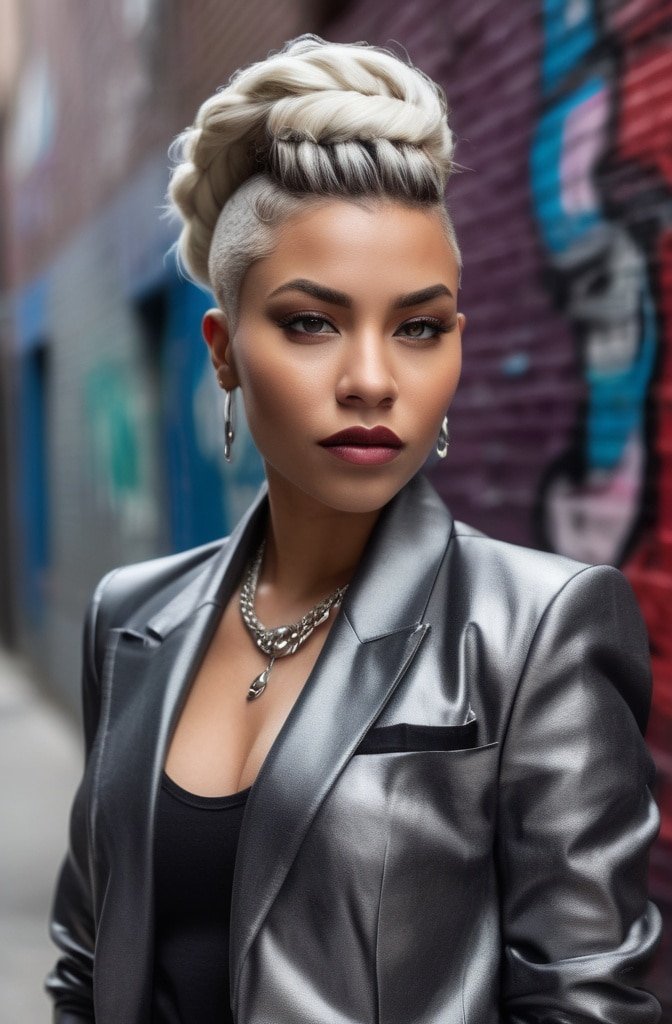
Channel retro vibes with a modern twist through this dramatic style. Create a Dutch braid along the top of your head for height and volume (similar to a pompadour shape), then gather the remaining hair into a textured bun at the back.
The voluminous front section creates a striking profile view that’s perfect for making a bold statement. This style works particularly well for those with heart-shaped or oblong faces, as it balances facial proportions beautifully.
To maintain the height throughout the day, consider using a volumizing powder at your roots before braiding. This creates grip and ensures your pompadour section won’t fall flat.
15. Waterfall Braid Updo

The waterfall braid creates the magical illusion of hair cascading like flowing water. Incorporate this stunning technique into an updo by creating a waterfall braid across the back of your head, then gathering the “falling” strands into a loose, textured bun.
This romantic, whimsical style perfectly balances structure with softness. The precise pattern of the waterfall weave contrasts beautifully with the deliberately undone quality of the bun.
For special occasions, try threading tiny pearl pins or crystal hairpins through the “waterfall” sections to create the appearance of dewdrops in your braid—absolutely breathtaking for evening events.
16. Five-Strand Braided Updo
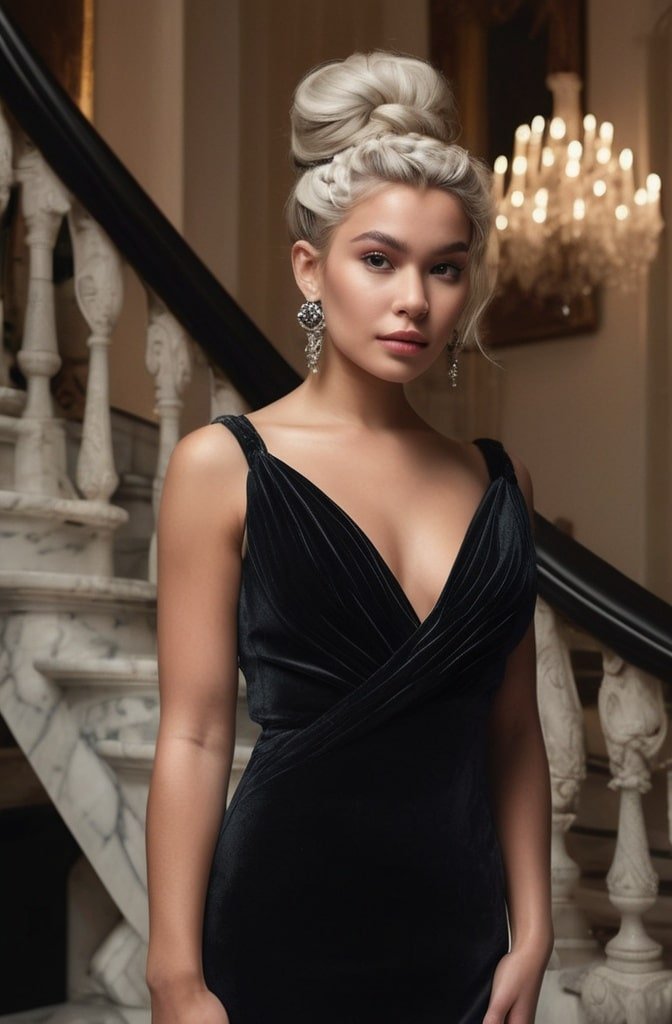
For the advanced braider looking to showcase their skills, the five-strand braid creates an impressively complex pattern. Create one or two five-strand braids, then wrap them into a low bun or coiled shape at the nape of your neck.
The intricate weaving pattern of this braid creates rich texture that catches the light beautifully. While it requires some practice to master, the results are well worth the effort for special occasions.
A helpful trick when learning this braid: use five different colored strings to practice the pattern before attempting it on your actual hair. The color-coding helps clarify which strand goes where until the movement becomes second nature.
17. Celtic Knot Braided Bun
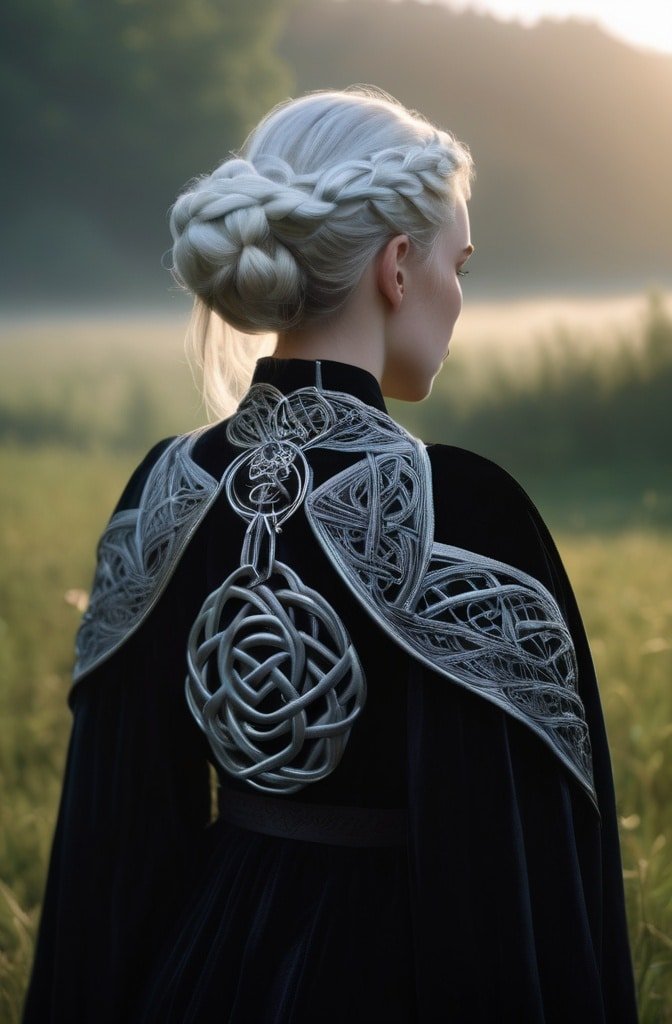
Inspired by ancient Celtic knotwork patterns, this elaborate style involves creating interconnected loops with braided sections of hair. The result resembles traditional Celtic artwork, with endless loops that flow seamlessly into one another.
This conversation-starting style is perfect for heritage celebrations, Renaissance festivals, or any event where you want your hair to be a true artistic statement. Despite its complex appearance, the basic technique involves simple loop-and-pull movements.
Dry shampoo is your best friend when creating this style, as it gives fine hair the grip needed to maintain these intricate structures without slipping.
18. Braided Space Buns
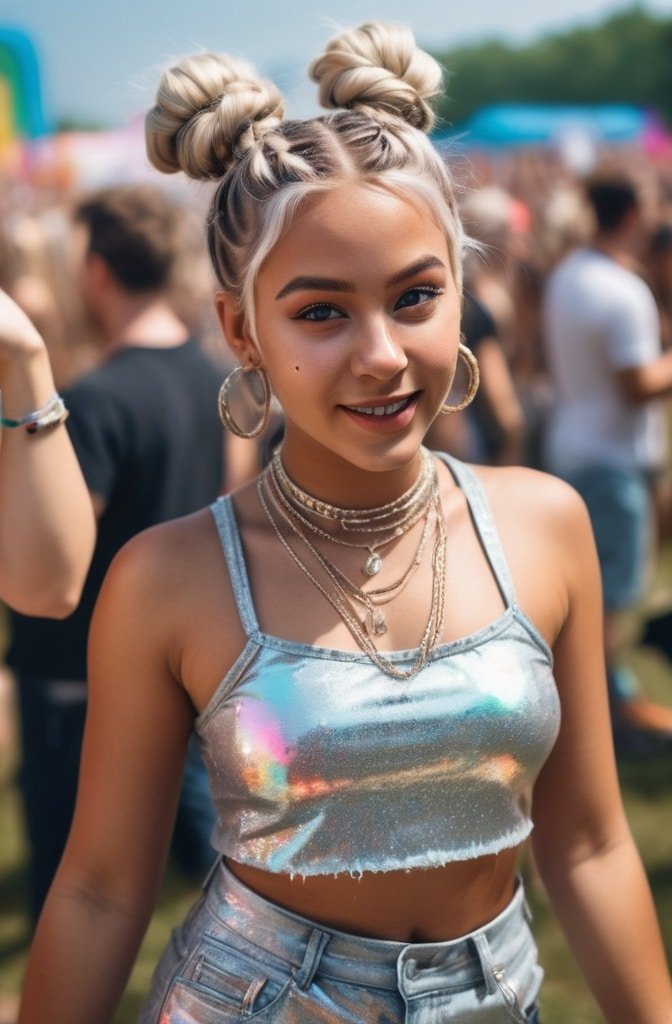
Perfect for festivals, casual outings, or just when you’re feeling playful, braided space buns bring a fun twist to a trendy style. Create two braids, then wrap each into a bun positioned high on either side of your head.
While traditional space buns can sometimes look a bit juvenile, the addition of braiding instantly adds sophistication and visual interest. The braided texture also helps the buns maintain their shape throughout a day of activities.
This style works amazingly for those growing out bangs or shorter layers, as the face-framing sections can be incorporated into the braids or left out as wispy accents.
19. Pull-Through Braid Updo
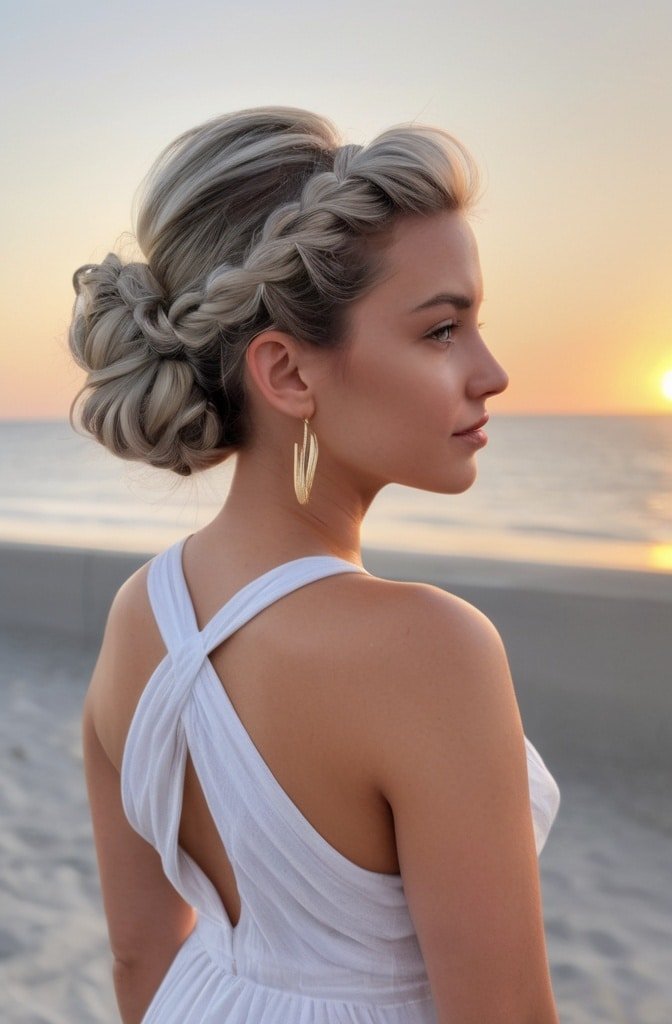
The pull-through braid isn’t technically a braid at all, but rather a series of connected ponytails that create the illusion of an intricate braid. Style it into an updo by wrapping the completed pull-through around itself to form a bun or twisted knot.
What makes this style particularly appealing is the incredible volume it creates—even those with finer hair can achieve a dramatically full look. It photographs beautifully, capturing light and shadow within its dimensional structure.
If your hair tends to be slippery, try using small clear elastic bands rather than hair-colored ones. The slightly higher grip helps maintain the tension needed for a perfect pull-through.
20. Lace Braid Crown Updo

The lace braid technique—where you only add new hair from one side of the braid—creates a delicate, feminine effect perfect for romantic occasions. Create a lace braid that follows your hairline in a crown formation, then style the remaining hair into a soft chignon.
This ethereal style has a dreamy, almost fairy-tale quality that works beautifully for garden weddings, engagement photoshoots, or any event where you want to embody gentle elegance.
For those with naturally wavy or curly hair, this style allows you to showcase your natural texture in the chignon while creating structure with the braided elements—the best of both worlds!
21. Dutch Fishtail Combo Updo
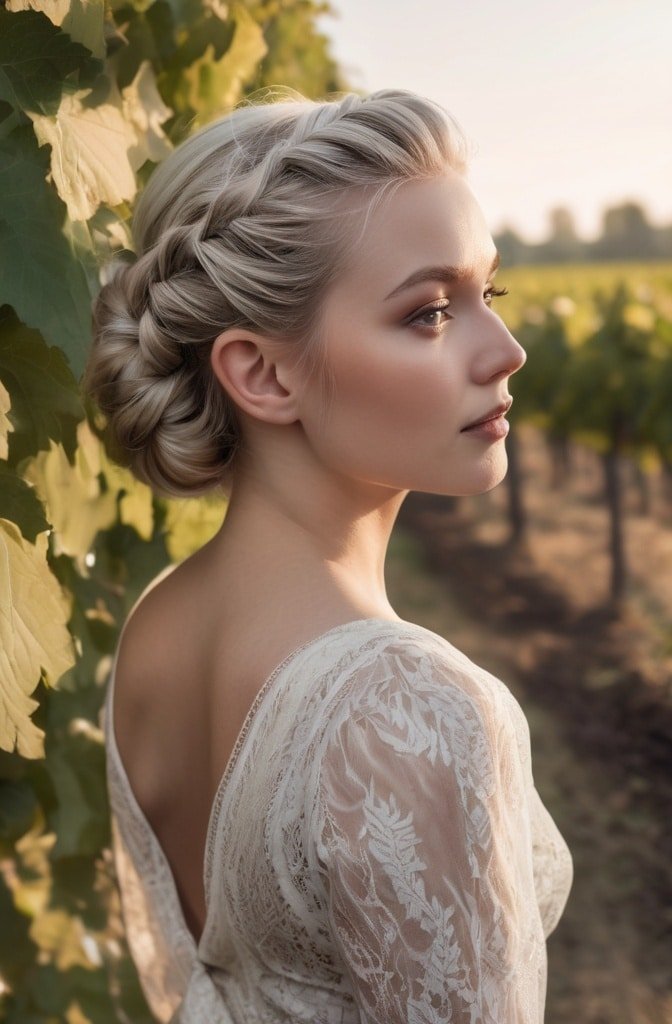
This showstopping style combines the height and dimension of a Dutch braid with the intricate weaving pattern of a fishtail. Begin with a Dutch braid at the crown, transitioning to a fishtail technique midway before wrapping the completed braid into a bun.
The contrast between these two braiding patterns creates fascinating texture variations that catch the eye. It’s perfect for when you want something uniquely beautiful without being overly flashy.
This combination works particularly well for those with highlighted or dimensional color, as the different braiding techniques showcase color variations in complementary ways.
22. Twisted Sister Updo

The twisted sister technique involves twisting hair sections rather than traditional braiding, creating a rope-like effect that’s both elegant and secure. Create multiple twisted sections and pin them in various directions for a multi-dimensional updo.
This approach offers the texture and security of braids but is significantly faster to execute—perfect for time-crunched mornings when you still want to look polished. The twisted texture holds particularly well in thick or coarse hair types.
I love this style because it’s virtually mistake-proof. Unlike precise braiding patterns, twisted sections are meant to look somewhat organic and flowing, so slight variations actually enhance rather than detract from the finished look.
23. Braided Sock Bun
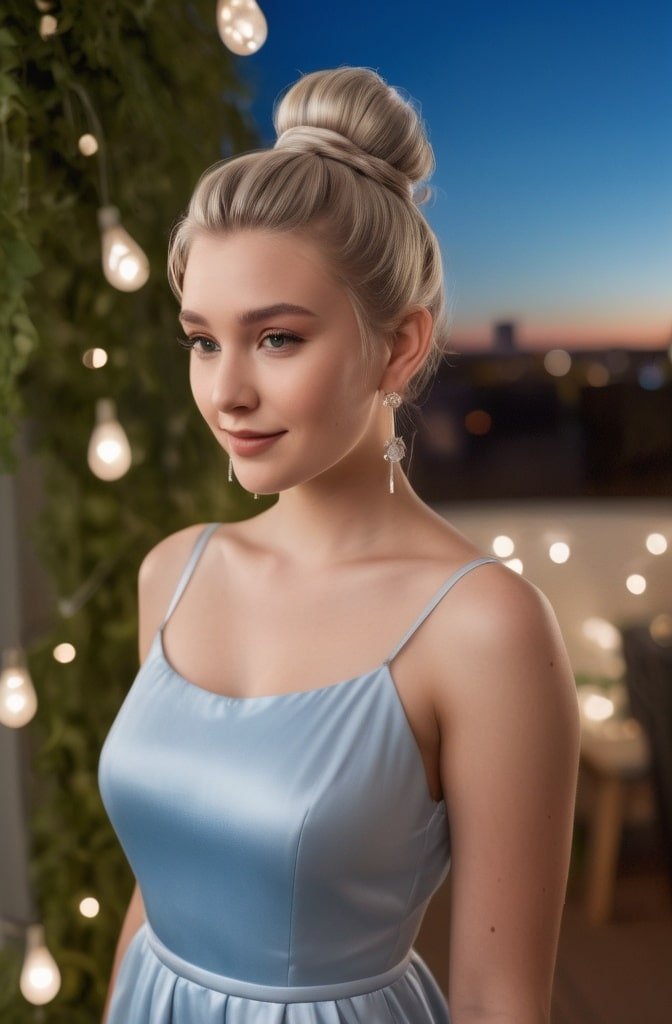
The sock bun gets a major upgrade with the addition of braided elements wrapped around its circumference. Create several thin braids throughout your hair before forming your sock bun, then wrap these braids around the base for added texture and security.
The contrast between the smooth, perfect circle of the sock bun and the intricate detail of the braids creates a visually pleasing juxtaposition. This style works well for dance performances, figure skating competitions, or any event requiring a sleek, polished look.
For extra hold that lasts through intensive activity, try spraying your braids lightly with texturizing spray before wrapping them around the bun. This creates grip and prevents slipping even through the most vigorous movements.
24. Box Braided Updo

For those with box braids, creating stunning updos offers endless creative possibilities. Gather your box braids into a high bun, leaving a few braids loose to wrap and pin in decorative patterns around the base.
What makes this style so spectacular is the built-in texture and weight of the box braids, which create natural structure and hold. Experimentation with asymmetrical positioning or sculptural shapes can yield truly artistic results.
This protective style is not only beautiful but functional, keeping ends tucked away and protected while making a bold style statement. Try incorporating wooden beads or gold cuffs for additional personalization.
25. Braided Mohawk Updo
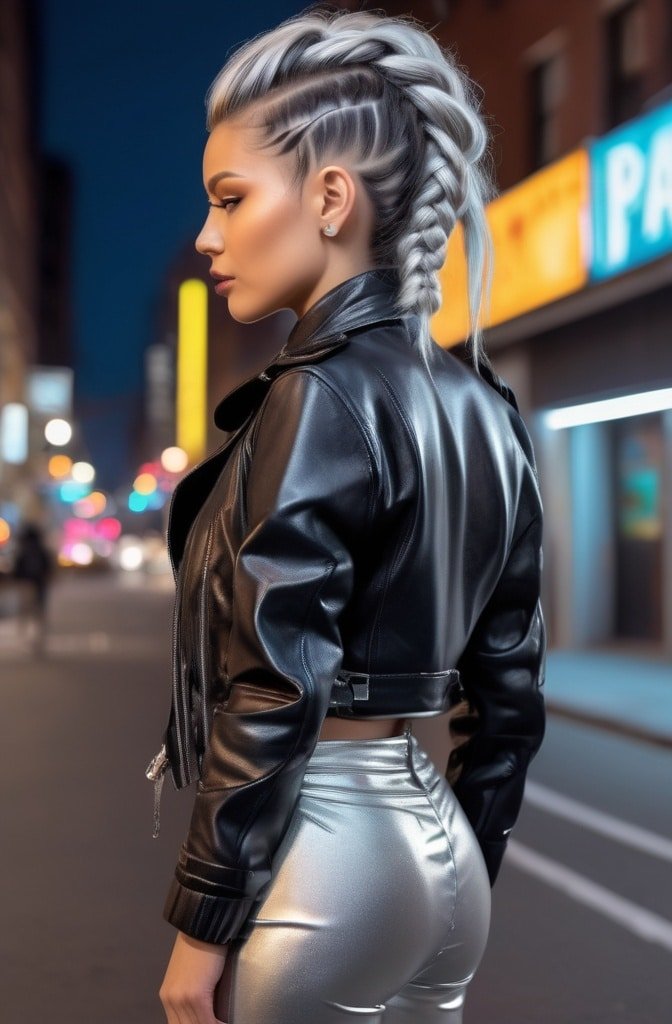
For those daring souls who love making a statement, the braided mohawk updo delivers major impact. Create a series of Dutch or cornrow braids running from your forehead to the nape of your neck, with the sides kept sleek and tight.
This edgy yet sophisticated style works surprisingly well for formal events where you want to express personality while still looking appropriate. The structure and intentionality of the style elevate it beyond its punk rock origins.
Don’t be afraid to play with height and volume along the mohawk section—strategic teasing or bubble techniques can create dramatic dimension that transforms this from a simple braided mohawk into a true couture hair creation.
26. The Butterfly Cut
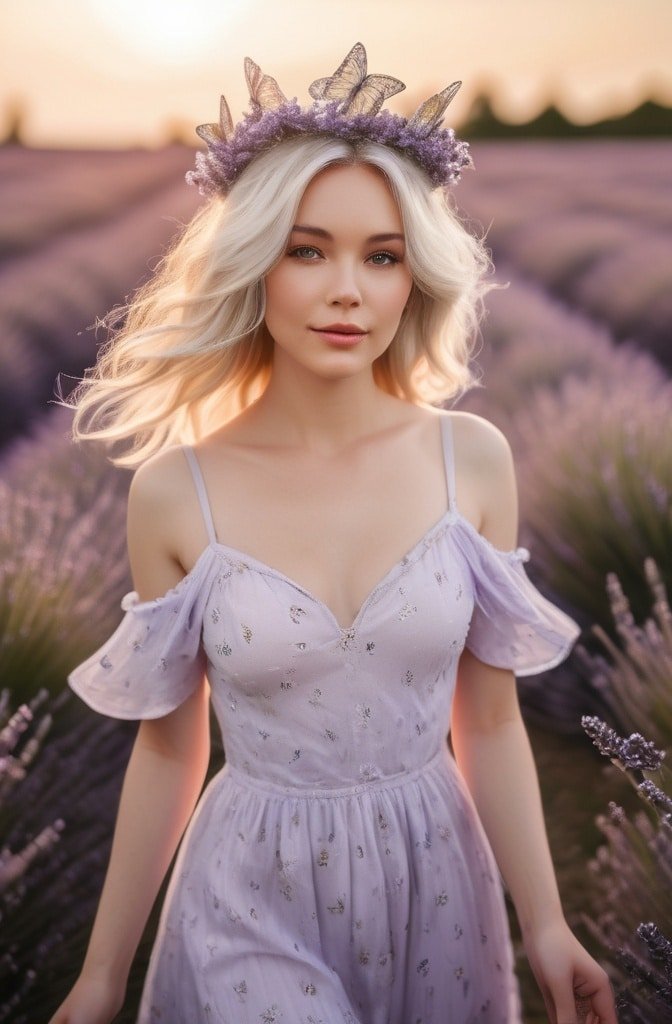
This beautifully layered style gets its name from the wing-like shape it creates when styled. The butterfly cut features face-framing layers starting at the chin, combined with shorter, fluttery layers throughout that create volume and movement reminiscent of butterfly wings.
What makes this cut special is the strategic placement of layers that allows for incredible versatility in styling. When blown out, the layers flip outward creating that signature wing effect, but the cut works equally well with curls or tousled textures.
This style is particularly flattering for heart-shaped and oval faces, as the face-framing sections highlight cheekbones while the layered volume balances proportions. It works beautifully on medium to thick hair but can be adapted for finer textures with the right products.
27. Elevated Bob with Shadow Root
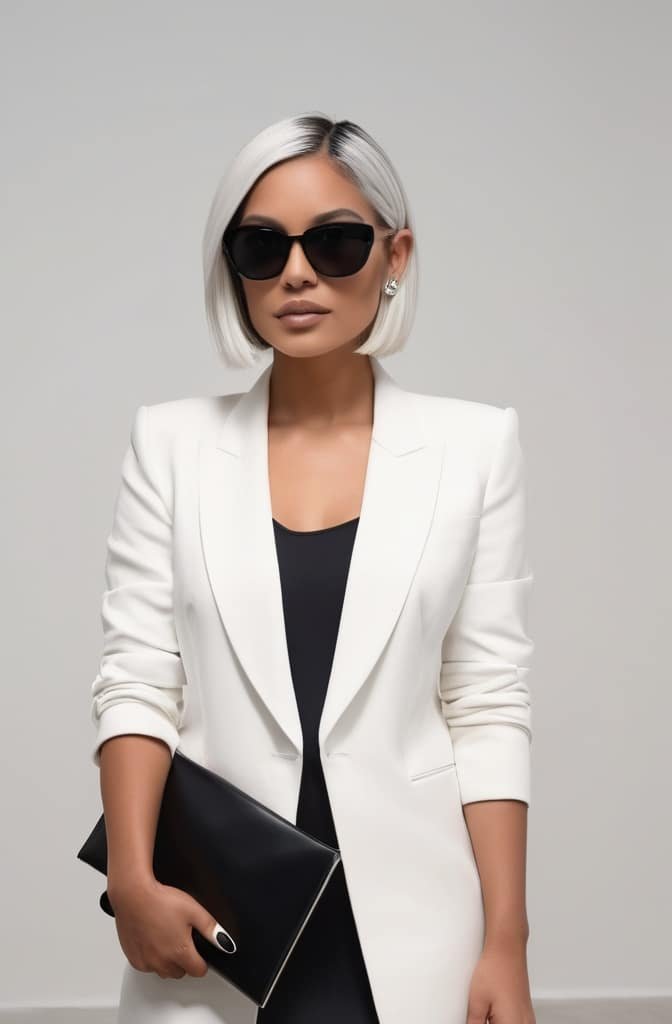
This sophisticated take on the classic bob combines precision cutting with deliberate color placement. The cut itself features clean, blunt lines with minimal layering, while the color technique incorporates a deeper “shadow” at the roots that gradually transitions to lighter ends.
The shadow root element adds dimension and depth that transforms a simple bob into something far more complex and interesting. It also creates a more forgiving grow-out process, as new growth blends with the intentional shadow rather than creating a stark line.
For styling, consider a sleek, straight approach that showcases both the precision cutting and the deliberate color transition. This look works particularly well for those with fine to medium hair seeking the appearance of greater thickness and dimension.
28. Bixie Cut
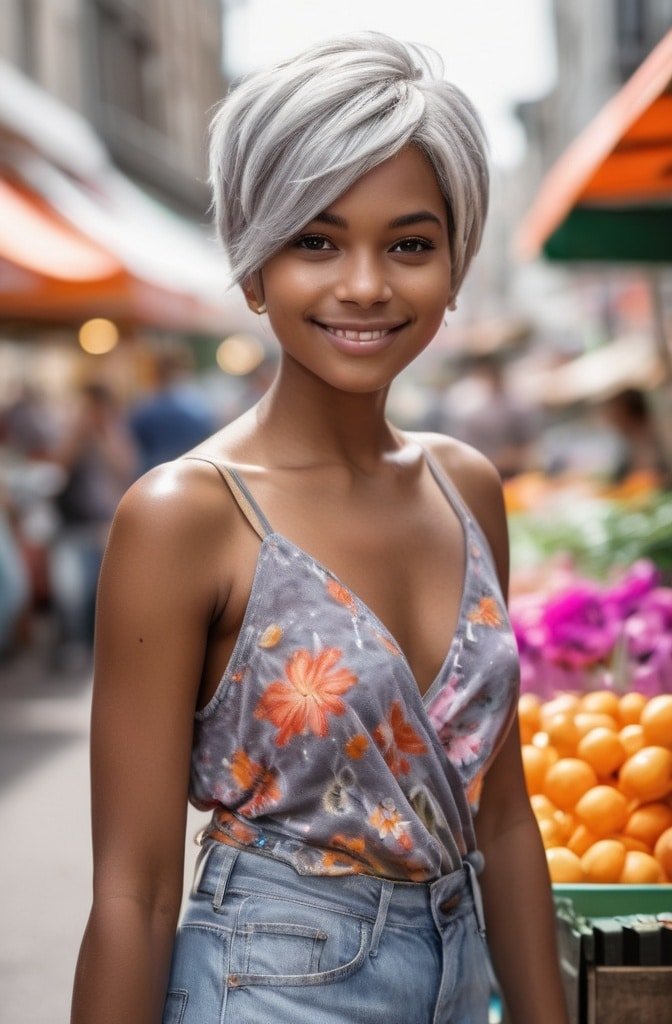
The bixie cleverly combines elements of the bob and pixie cuts to create a short-yet-versatile style. Longer than a traditional pixie but shorter than a bob, this cut typically features shorter layers at the crown with slightly longer pieces around the face and nape.
This hybrid approach offers the face-framing benefits of a bob with the low-maintenance ease of a pixie. The varied lengths throughout create natural texture and volume while requiring minimal styling effort—perfect for those with active lifestyles.
The bixie works across hair textures but is particularly flattering for those with natural wave or curl, as the varying lengths enhance natural movement. For styling, a simple texturizing spray and finger-scrunching often provides all the definition needed.
29. Orbit Cut
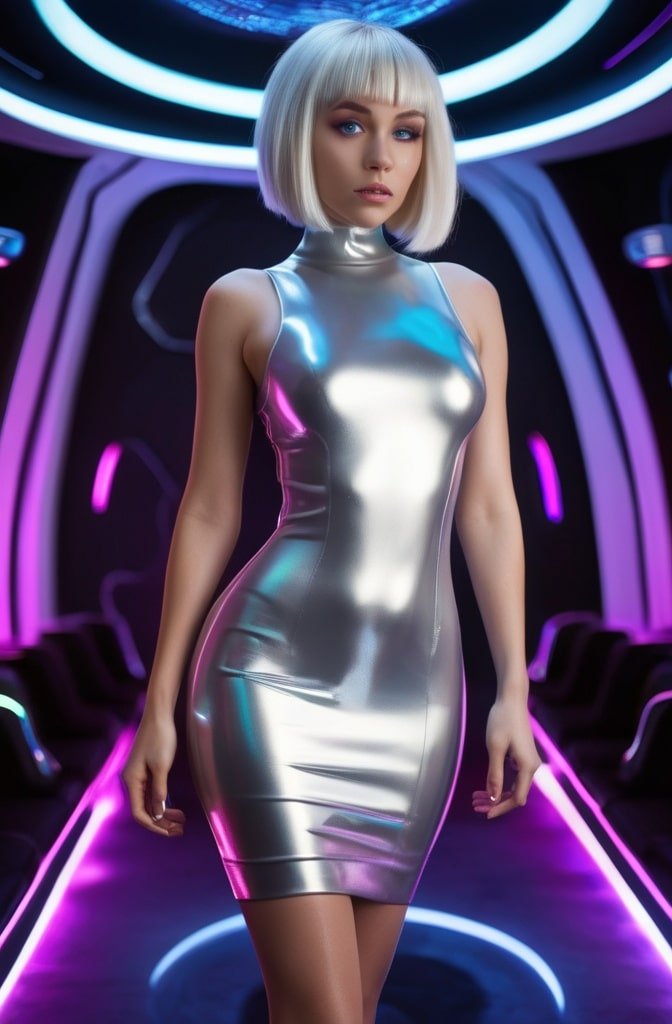
The orbit cut features concentric circles of length that create a planetary orbit-like effect when viewed from above. Typically, this involves a shorter center section (often at the crown) with progressively longer circles of hair surrounding it.
This architectural approach creates fascinating movement that flows outward like ripples in water. The precision cutting creates a stunning visual effect when the hair is styled sleek and straight, highlighting the deliberate circular pattern.
This avant-garde cut works best on straight to slightly wavy hair with medium density. While definitely more editorial in nature, it can be adapted for everyday wear by incorporating softer blending between the circular sections.
30. Invisible Layers

Unlike traditional obvious layering, invisible layers are cut using specialized techniques that remove bulk without creating noticeable layer lines. The result is hair that moves beautifully and has incredible dimension without looking obviously layered.
This technique often involves slide-cutting and point-cutting methods that thin out specific sections while maintaining the overall length and perimeter shape. The magic happens when you move—the hair swings and flows with natural-looking movement and volume.
This approach works wonderfully for those who want the benefits of layers (movement, volume, reduced bulk) without changing their overall look dramatically. It’s particularly effective for thick hair types that need weight removed while maintaining length.
31. Chandelier Layers
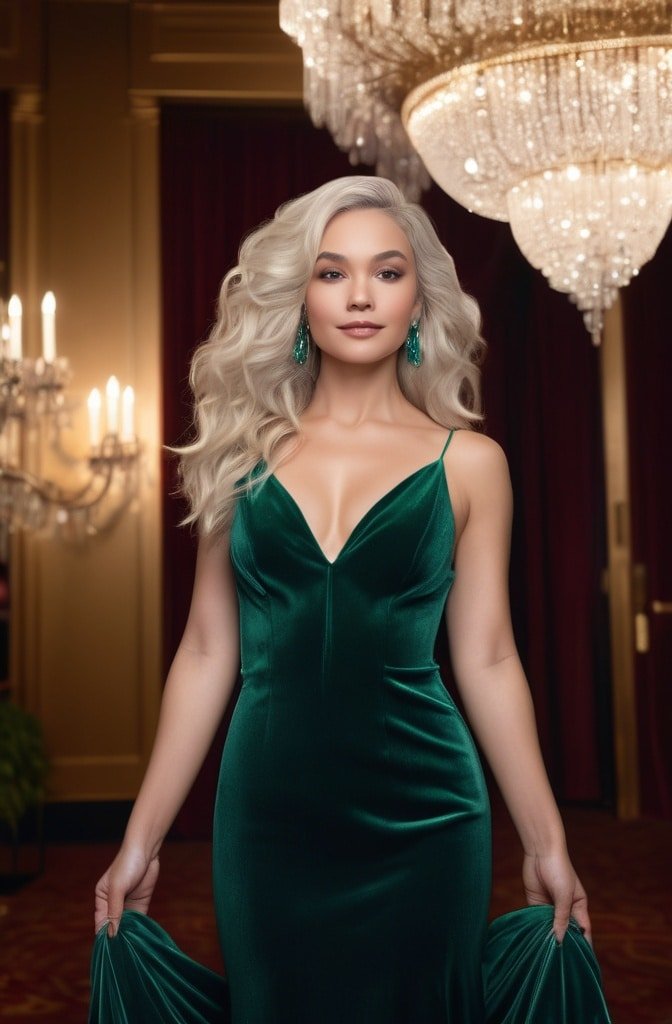
Named for their resemblance to a tiered chandelier, this cutting technique creates dramatic, waterfall-like layers that cascade downward in distinct sections. Each layer is clearly defined, creating a stunning dimensional effect especially when styled with waves or curls.
Unlike standard layers that might be cut at various angles, chandelier layers are cut horizontally to create that distinct “tier” effect. The result is hair that moves in synchronicity, with each layer swinging like the crystals on a chandelier.
This statement-making cut works beautifully on medium to long hair with some natural body or wave. For maximum impact, consider adding balayage or dimensional color to highlight the distinct layer separations.
32. Sculpted Crop
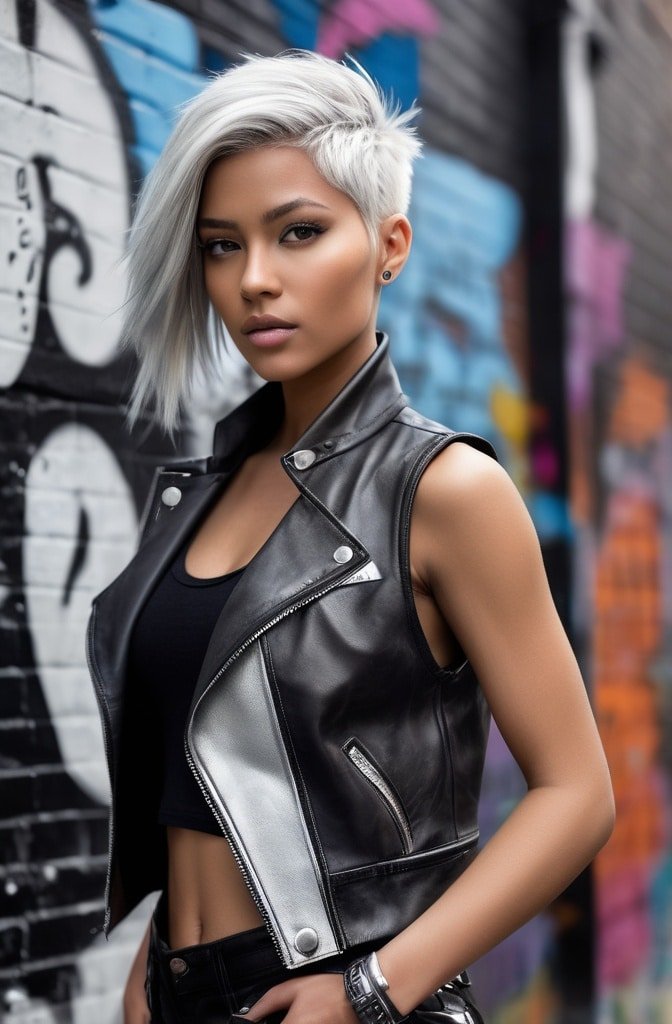
This precision-focused short cut uses careful sculpting techniques to create a customized shape that complements your specific head form and facial features. Rather than following a standardized short haircut pattern, every angle is considered and shaped accordingly.
What distinguishes the sculpted crop from other short cuts is the emphasis on creating a three-dimensional shape that works with your natural growth patterns and bone structure. The result is a cut that appears to have been molded perfectly to your unique features.
This architectural approach requires an experienced stylist with an eye for proportion and form. When executed properly, it creates a low-maintenance yet high-impact style that grows out gracefully over time.
33. Glass Hair
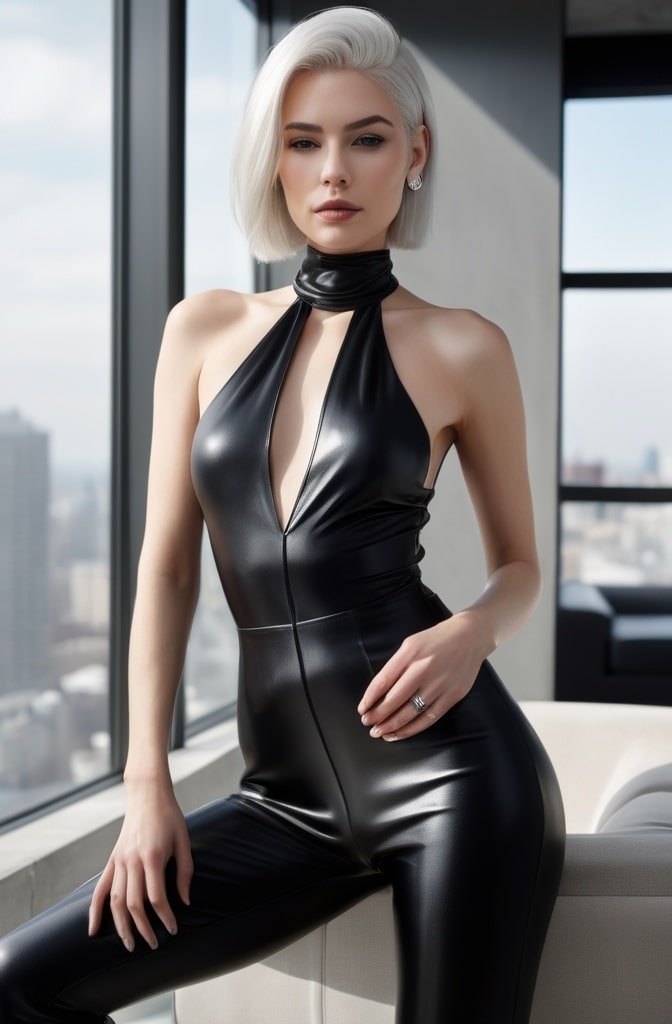
Less a specific cut and more a cutting and styling technique, glass hair creates the appearance of hair so smooth and reflective it resembles glass. This typically involves a blunt, one-length cut (often a bob or lob) styled to maximum smoothness and shine.
The cutting technique is crucial—ends must be cut with absolute precision using sharp shears to create the perfect blunt line. This, combined with meticulous straightening and shine-enhancing products, creates the signature reflective quality.
This high-maintenance look requires regular trims to maintain the precise edge that creates the glass effect. It works best on naturally straight, medium-textured hair but can be achieved on other hair types with the right tools and products.
34. C-Shaped Cut
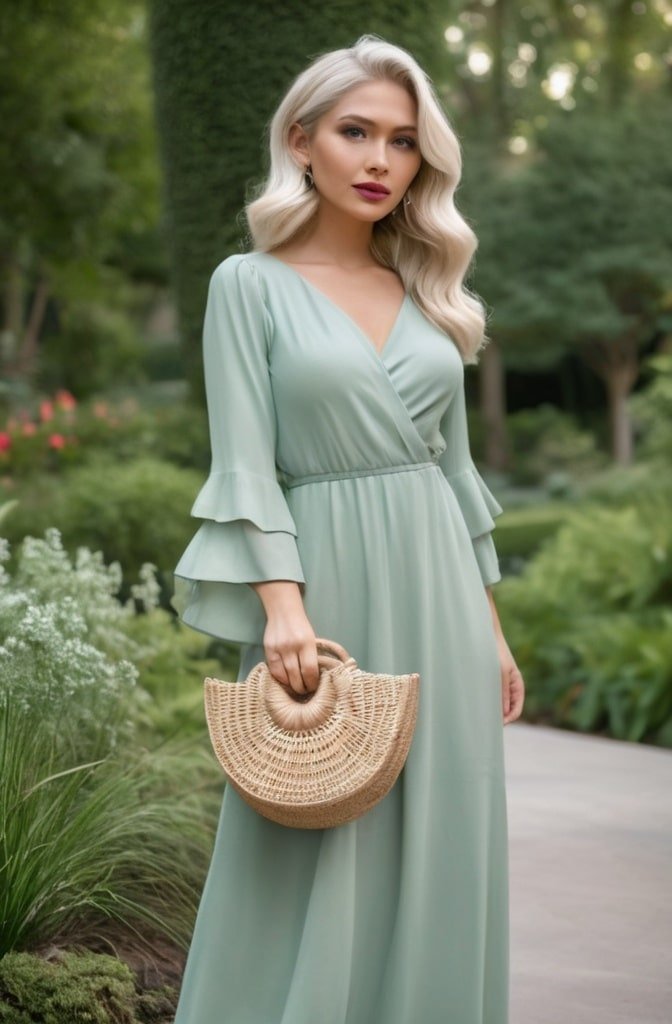
This face-framing cut creates a gentle C-curve around the face, with the shortest point typically at the chin and gradually increasing in length toward the back. The specific curve is customized to highlight your best features while softening any harsh angles.
Unlike a traditional bob, which often follows a straight or A-line pattern, the C-shaped cut creates a softer frame that has both structure and flow. The curve can be subtle or dramatic, depending on your preference and face shape.
This flattering cut works well across hair textures and is particularly effective for those with square or rectangular face shapes, as the curved line softens angular features. For styling, a round brush blowout emphasizes the intentional C-curve.
35. Oval Layer Cut

This innovative approach uses oval-shaped layers rather than traditional horizontal ones. The stylist cuts following oval patterns around the head, creating multidimensional movement that flows in circular patterns rather than falling straight down.
The oval technique creates fascinating movement patterns that seem to swirl rather than simply cascade. This works particularly well on curly and wavy textures, enhancing natural curl patterns while creating a cohesive overall shape.
For styling, diffuse-drying enhances the natural movement created by the oval cutting pattern. Scrunching with curl-enhancing products further defines the unique dimensional quality of this cutting technique.
36. Feathered Pixie Shag
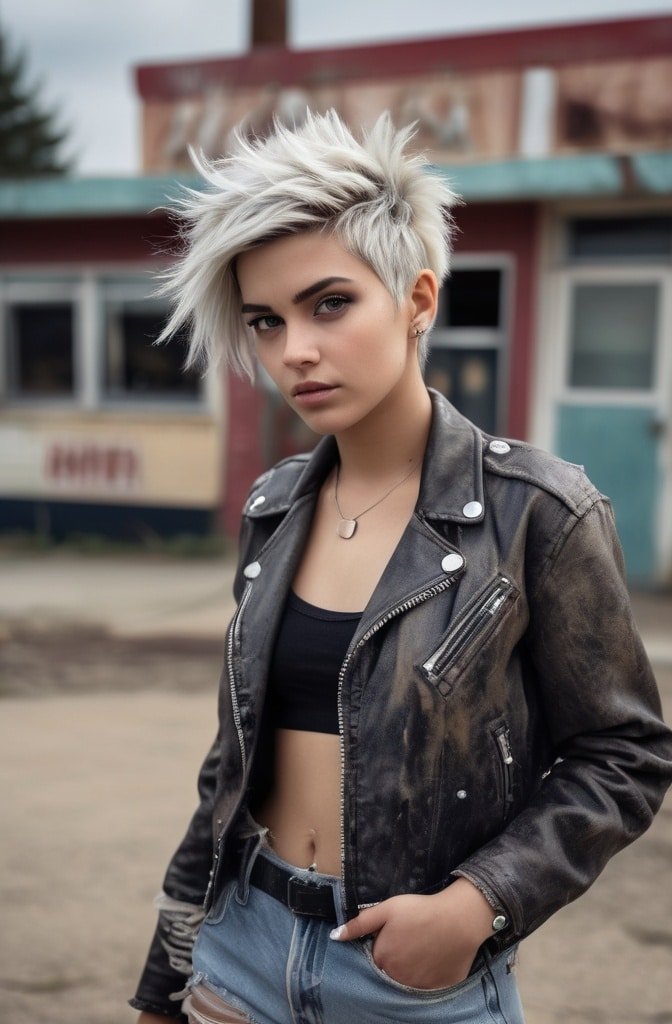
This texture-focused short cut combines the face-framing features of a pixie with the wispy, layered quality of a shag. The result is a short cut with incredible movement and piece-y definition that works beautifully for various face shapes.
What distinguishes this from a standard pixie is the emphasis on creating movement through feathered cutting techniques. Rather than clean lines, the feathered approach creates soft, wispy ends that move freely and give the cut a lived-in quality from day one.
This style works particularly well for those with fine to medium hair, as the feathered technique creates the appearance of greater density. For styling, finger-tousle with a lightweight texturizing paste for that effortless, feathered effect.
37. Diagonal Forward Cut

This architectural approach features a dramatic angle that moves from shorter in the back to significantly longer in the front, with the angle following a distinct diagonal line rather than a graduated curve. The result is a graphic, geometric shape that creates visual interest from every angle.
Unlike an A-line bob, which typically follows a more gradual incline, the diagonal forward cut creates a more dramatic, fashion-forward silhouette. The specific angle can be customized based on face shape and desired impact.
This precision cut works beautifully on straight, sleek hair where the clean lines can truly shine. Regular trims are essential to maintain the sharp diagonal that gives this cut its distinctive character.
38. Living Coral Reef Cut
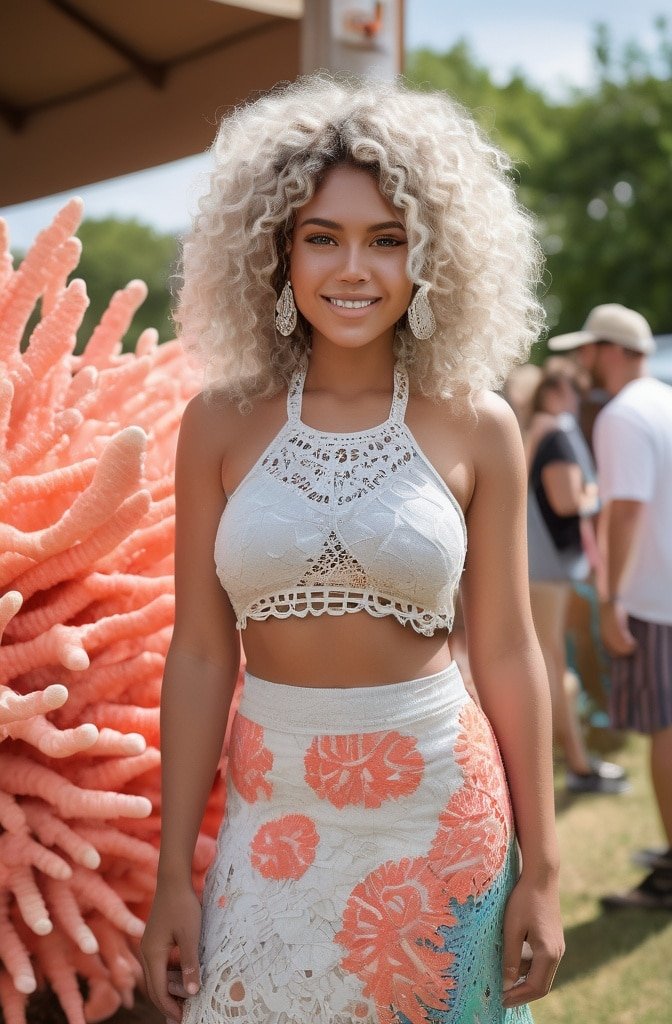
Inspired by the organic shapes of coral reefs, this creative cutting technique incorporates varied lengths and textures that mimic the diverse structures found in coral formations. The result is a cut with incredible natural movement and dimension.
Rather than following traditional cutting patterns, the coral reef technique embraces randomness and organic variation. Certain sections might be shorter and more textured (like branching coral), while others remain longer and flowing (like waving sea plants).
This nature-inspired approach works beautifully for those with naturally wavy or curly hair, as it enhances and celebrates natural texture rather than trying to tame it. The cut actually improves as it grows out, evolving like a living organism.
39. The Tumble Cut
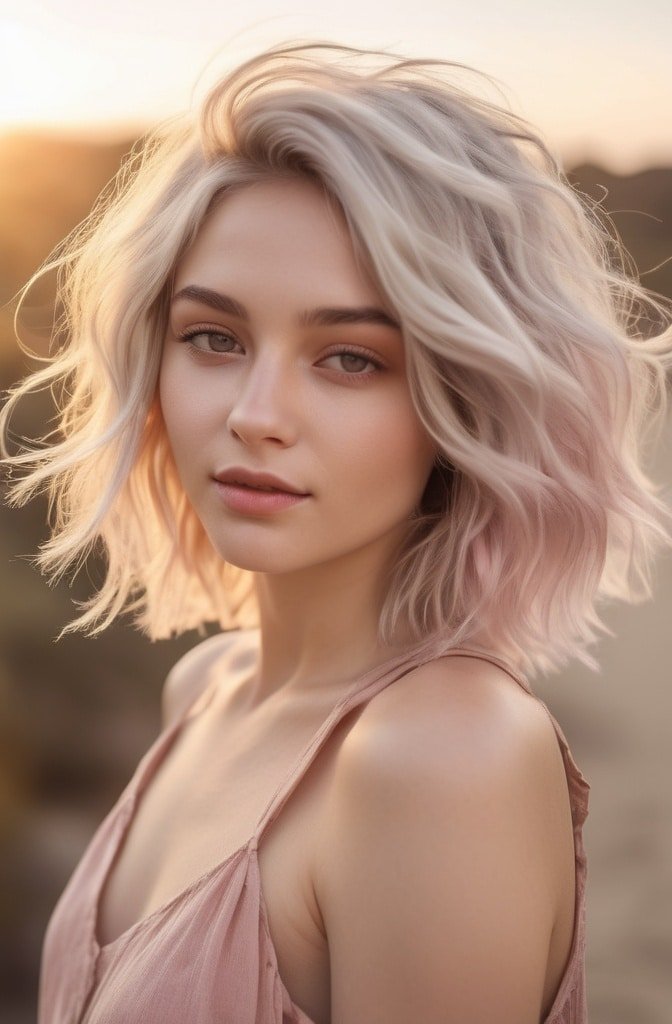
This innovative technique creates a cascade effect that gives the appearance of hair naturally “tumbling” downward. It involves subtle, internal layers cut at varied angles, creating invisible structure that guides the hair into a tumbling pattern when in motion.
Unlike obvious layers, the tumble cut creates movement through strategic internal cutting that remains largely invisible when the hair is static. The magic happens when you move—the hair follows predetermined patterns that create that signature tumbling effect.
This elegant approach works wonderfully for medium to long hair and is particularly effective for special occasions when you want sophisticated movement without obvious layering. For maximum impact, style with large-barrel waves that enhance the tumbling quality.
40. Geometric Bowl
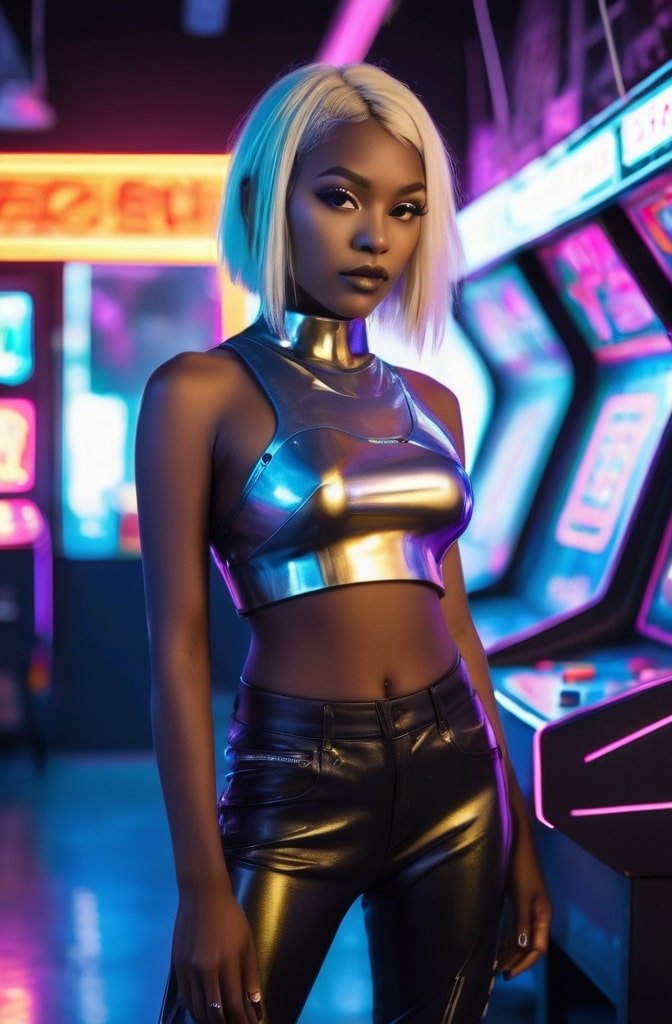
This modern interpretation of the bowl cut incorporates precise geometric elements that transform it from retro to revolutionary. Sharp lines, perfect circles, and precise angles replace the soft, rounded shape of traditional bowl cuts.
What makes this version special is the intentional, architectural approach to what was once considered a simplistic cut. Particular attention is paid to how the geometric shape interacts with facial features, creating interesting tensions and focal points.
This editorial style works best on straight, dense hair that can showcase the precise cutting patterns. Bold fashion colors or high-contrast color blocking further emphasizes the geometric nature of this statement-making cut.
41. Contoured Pixie

This personalized approach to the pixie incorporates face-contouring principles into the cutting technique. Certain sections are cut to highlight cheekbones, jawlines, or eyes, while others create subtle shadows that enhance natural bone structure.
What separates this from a standard pixie is the highly customized nature of each cut, designed specifically for your unique facial features. No two contoured pixies look alike, as each is engineered to enhance individual bone structure.
This sophisticated approach requires an experienced stylist with an understanding of facial anatomy and light reflection. When executed properly, it creates a cut that does for your face permanently what makeup contouring does temporarily.
42. Watercolor Waves

This style combines specific cutting techniques with color application methods to create a fluid, watercolor-like effect within the hair. Soft layers are cut to enhance natural movement, while color is applied in sheer, overlapping sections that blend like watercolor paints.
The cutting technique focuses on creating the perfect canvas for the color application—typically incorporating long layers that allow colors to blend and flow into one another. The result is hair that moves with multidimensional color reminiscent of watercolor paintings.
This artistic approach works beautifully on medium to long hair with some natural wave or texture. The movement of the hair enhances the blending of the colors, creating that signature watercolor effect in motion.
43. The Aura Cut
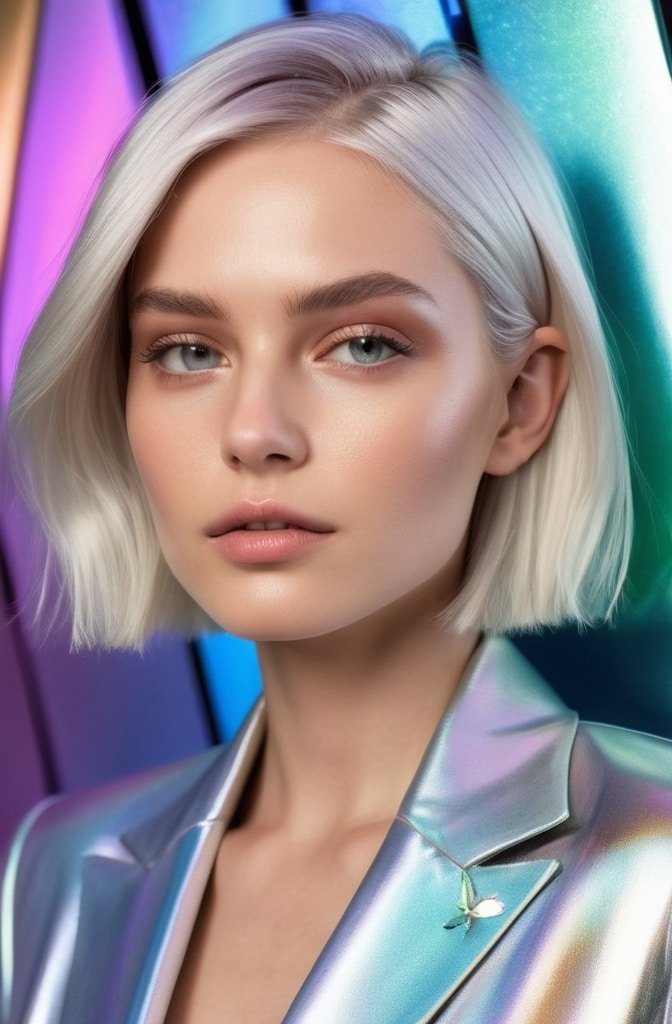
Inspired by the concept of energy fields surrounding the body, the aura cut features softly layered sections that appear to float around the face like an aura. The layers are cut to create volume and movement away from the face, forming a halo-like effect.
What distinguishes this from standard face-framing is the specific focus on creating outward movement that surrounds rather than simply frames the face. The cutting technique typically involves point-cutting at varied angles to create that ethereal, floating quality.
This flattering approach works across face shapes and hair textures, creating a softening effect that enhances facial features. For maximum impact, style with a round brush, directing sections away from the face to enhance the aura effect.
44. Broken Bob
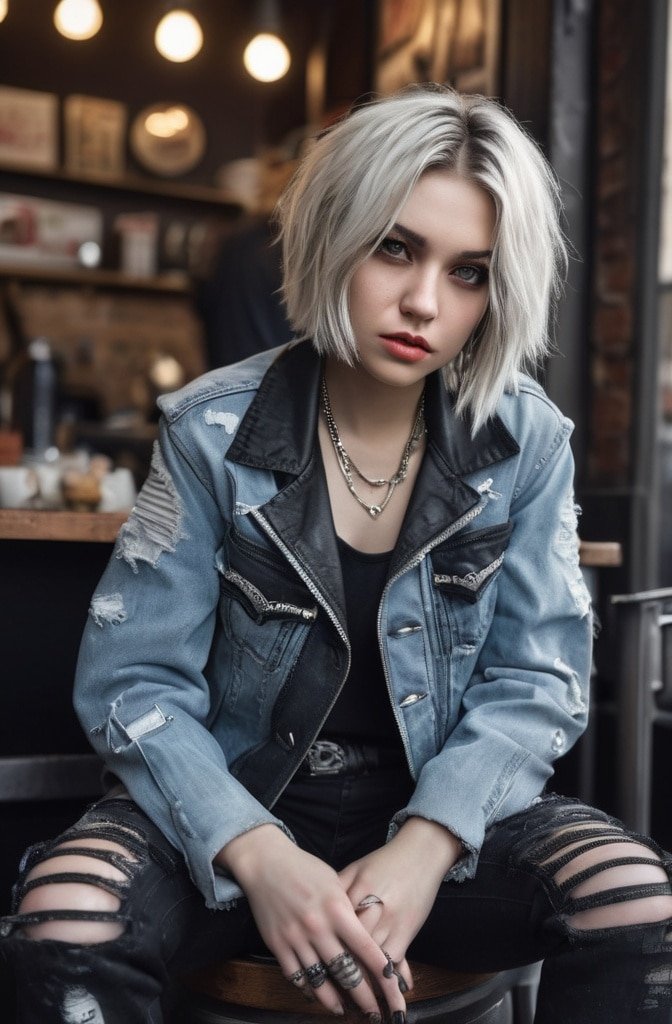
The broken bob disrupts the traditional clean lines of a classic bob with intentionally “broken” sections—pieces that are randomly shorter or textured differently to create controlled chaos within an otherwise structured cut.
Unlike a perfectly blunt bob, the broken bob incorporates select pieces that break the uniformity, creating interest and movement without sacrificing the overall bob silhouette. These disruptions might include notched sections, random shorter pieces, or heavily textured areas.
This contemporary approach offers the structure of a bob with added edge and personality. It works particularly well for those with some natural texture who want a low-maintenance yet interesting cut that doesn’t require perfect styling to look intentional.
45. Horizon Layers
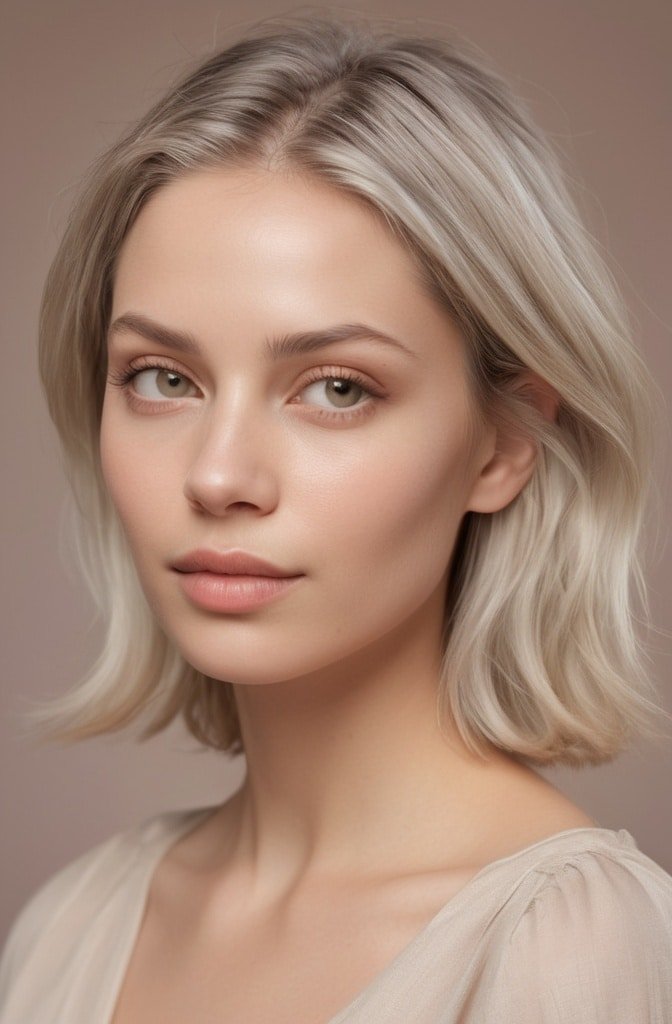
This innovative layering technique creates a visible “horizon line” through the hair, with distinctly different textures or lengths above and below this line. Typically, the hair above the horizon line might be more textured or shorter, while hair below remains longer or smoother.
What makes this approach unique is the clear delineation between the two sections, creating a visual horizon that adds architectural interest to the overall cut. The horizon line can be placed at different heights depending on face shape and desired effect.
This editorial technique works well on various hair types but creates particularly striking results on those with naturally straight hair where the horizon line remains clearly visible regardless of styling approach.
46. Rivulet Cut
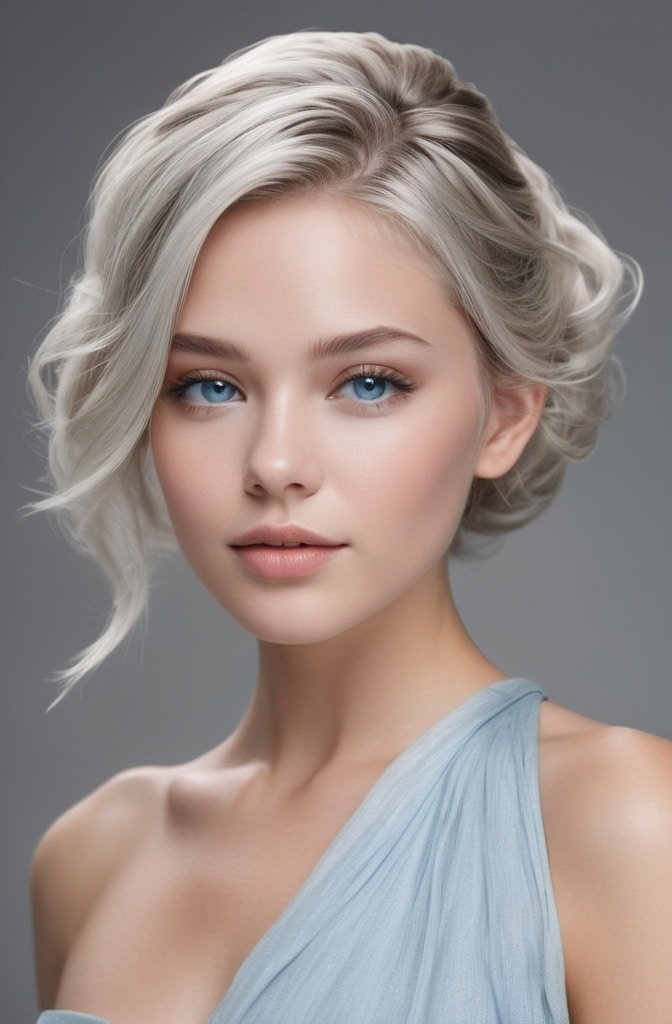
Inspired by water pathways, the rivulet cut incorporates flowing, stream-like channels throughout the hair. These channels are created through strategic cutting techniques that guide the hair to fall in distinct rivulet patterns.
Unlike random layering, the rivulet approach creates intentional flow patterns that direct how the hair moves and falls. Each “stream” is carefully crafted to enhance your specific growth patterns and face shape, creating natural-looking yet controlled movement.
This organic approach works beautifully on wavy to curly hair types, as the natural texture enhances the rivulet effect. For straight hair, strategic styling with a curling wand can help emphasize the intentional flow patterns.
47. Shadow Cut
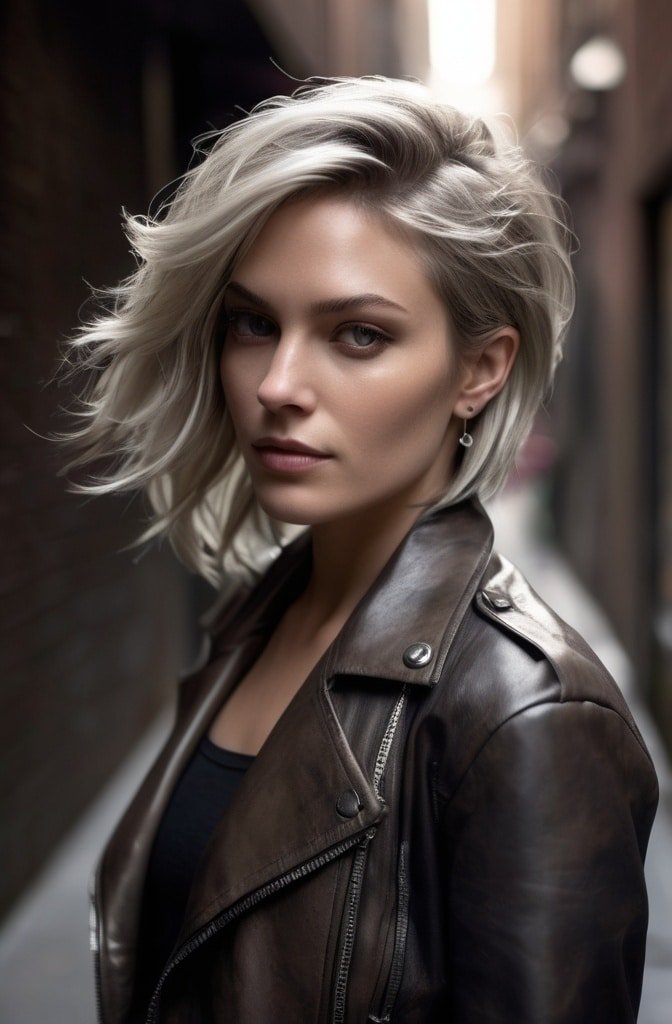
The shadow cut uses strategic layering to create areas of visual depth and lightness within the hair, similar to how shadows and light interact. Certain sections are cut shorter or texturized to create “shadow” areas, while others remain longer to catch light.
This dimensional technique creates fascinating visual play as you move, with sections appearing to shift between light and shadow. The specific placement of these shadow areas can be customized to highlight or contour facial features.
This subtle yet impactful approach works across hair types but creates particularly striking results on highlighted or dimensional hair, where the color variation enhances the shadow effect created by the cutting technique.
48. Accordion Cut
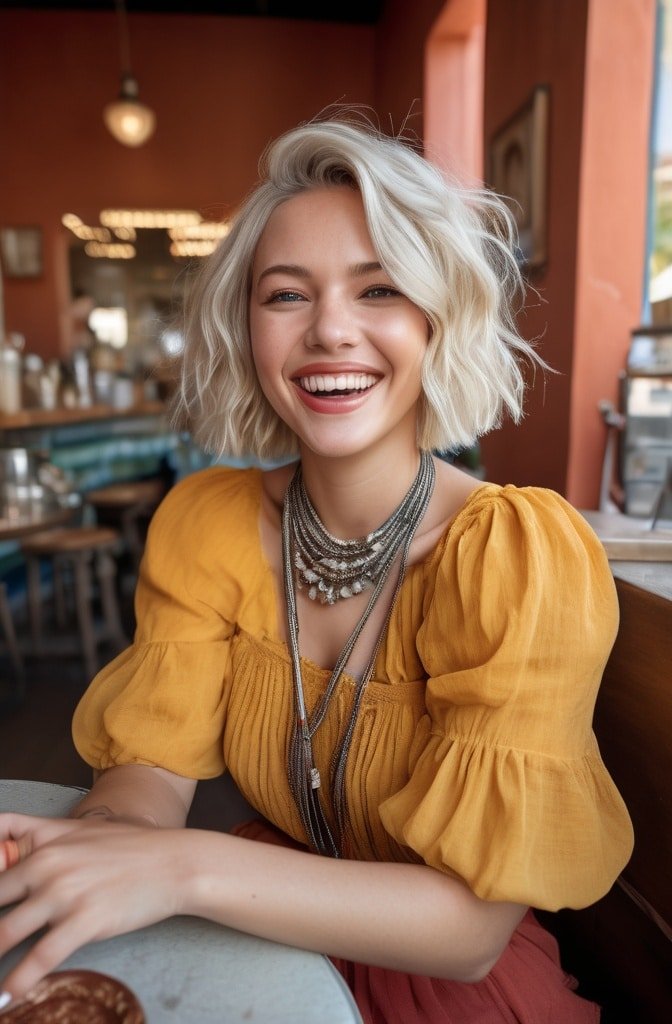
Named for its resemblance to the musical instrument, the accordion cut features precisely placed sections that expand and contract with movement, creating fascinating dimension and texture. The technique typically involves alternating shorter and longer sections in a rhythmic pattern.
When styled straight, the accordion cut appears relatively uniform, but with movement or styling, the alternating lengths create that signature accordion-like expansion and contraction. This creates incredible movement even in otherwise straight hair.
This innovative approach works wonderfully for those with fine to medium hair seeking the appearance of greater volume and movement. The specific pattern can be customized based on hair density and desired effect.
49. Crystalline Cut
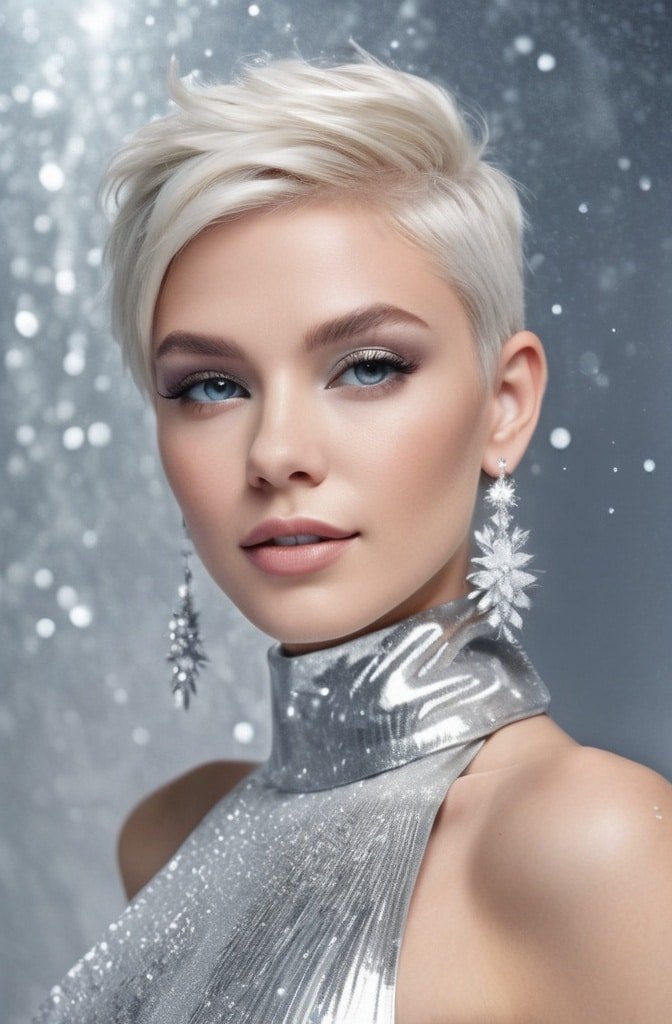
This precision technique creates sharp, multifaceted layers that reflect light like cut crystal. Each section is cut at specific angles designed to catch and reflect light, creating incredible dimension and shine from every direction.
Unlike soft, blended layers, the crystalline approach embraces precise angles and clean lines. When light hits these intentional cutting planes, it creates brilliant reflections that bring the hair to life, even with minimal styling.
This architectural approach works best on straight, healthy hair where the light-reflecting qualities can truly shine. Regular trims maintain the precise angles that create the crystalline effect.
50. Eclipse Cut
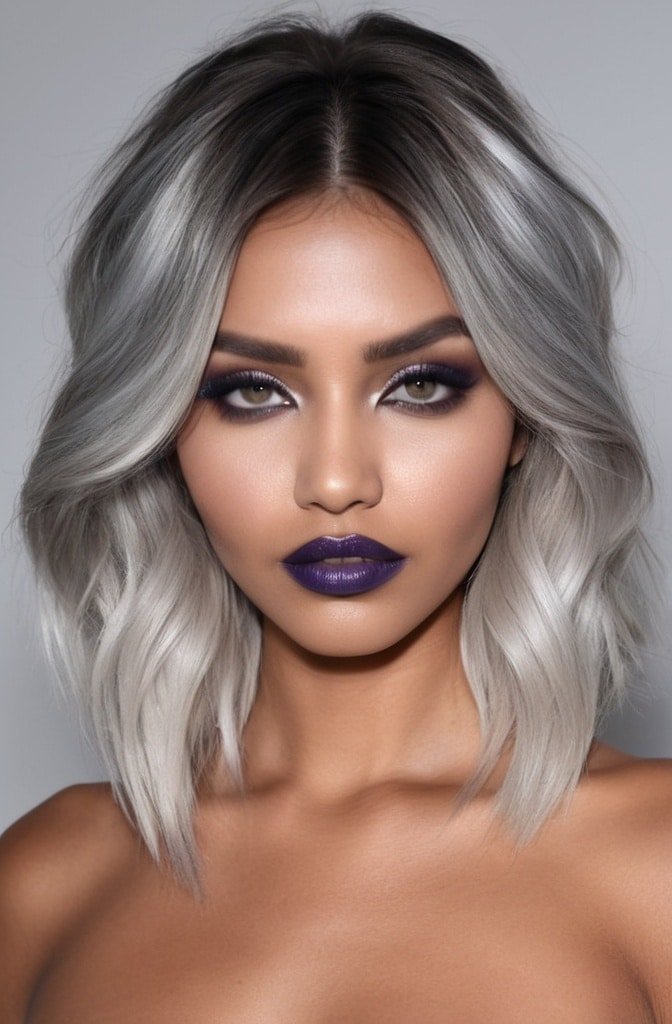
The eclipse cut features a perfect circular shape when viewed from above, with a distinct outer perimeter and inner circle of different lengths. Typically, either the inner or outer circle is shorter, creating a ring-like effect reminiscent of a solar eclipse.
This conceptual approach creates fascinating movement patterns as the shorter circle interacts with the longer sections during motion. The result is hair that moves in unexpected, almost hypnotic ways unlike traditional cuts.
This avant-garde style works best on straight to wavy hair with medium density. While definitely editorial in nature, it can be adapted for everyday wear with subtle variations in length between the inner and outer circles.
Final Thoughts
Braided updos offer that perfect blend of practicality and beauty. They keep hair secure and out of your face while creating stunning visual interest that elevates any outfit or occasion. What I love most about these styles is their versatility—the same basic techniques can be adjusted to suit casual days, professional settings, or your most special celebrations.
Remember that practice makes perfect when it comes to braiding. Don’t be discouraged if your first attempt at these styles doesn’t look identical to professional photos. Hair texture, thickness, and length all influence how braids sit and hold, so embrace your hair’s unique characteristics and adapt these ideas to work for you.
Most importantly, have fun experimenting! These 47+ styles are just the beginning—once you’ve mastered the basic techniques, the creative combinations are truly endless. Your next signature hairstyle might be just a braid away.
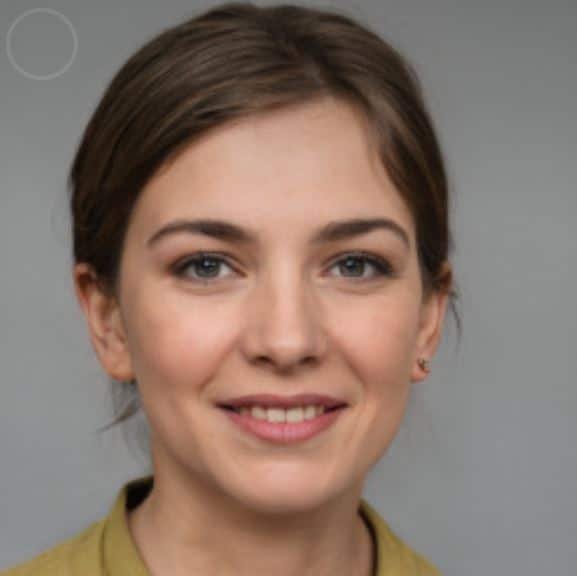
Tina Johnson | Fashion Mags Your ultimate style guide! Trendy tips, latest fashion news & inspiration to keep you chic & glamorous.

